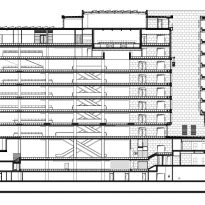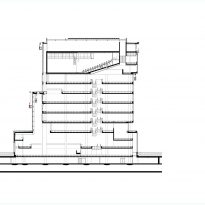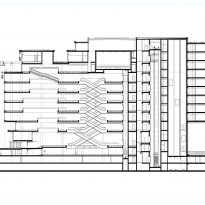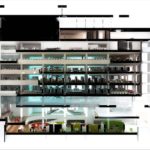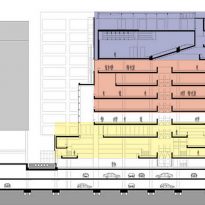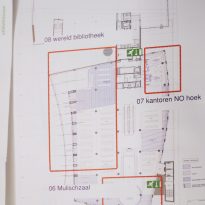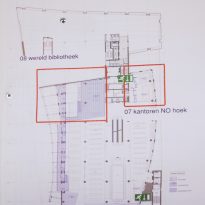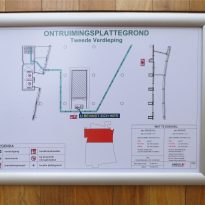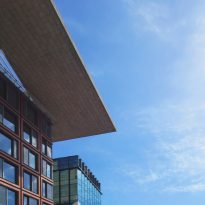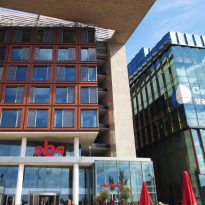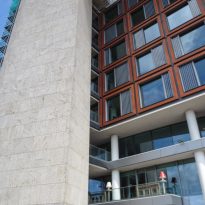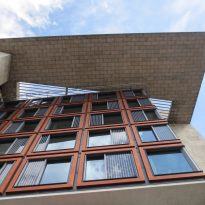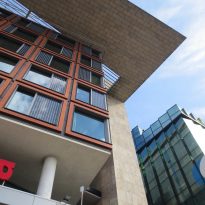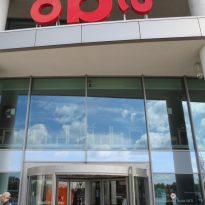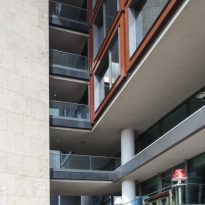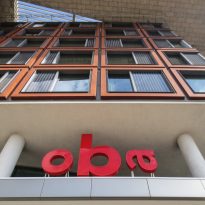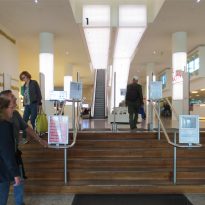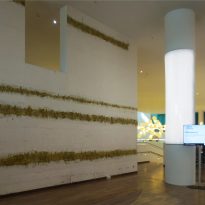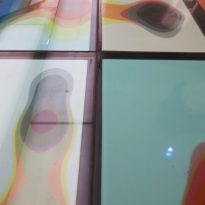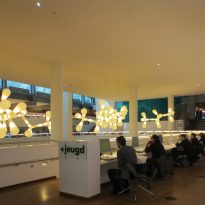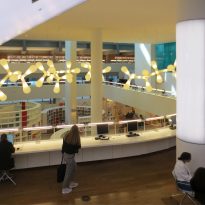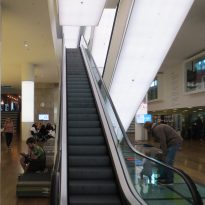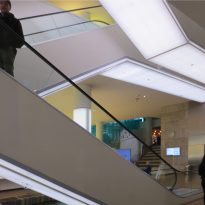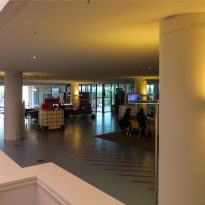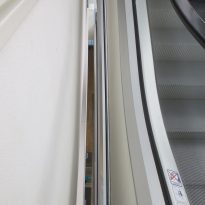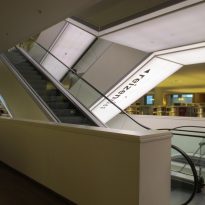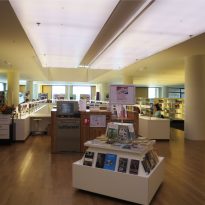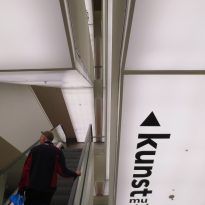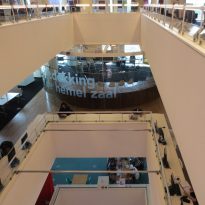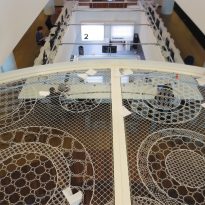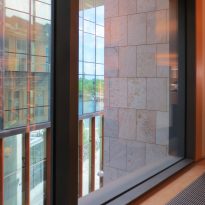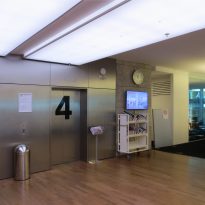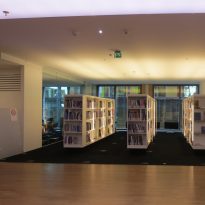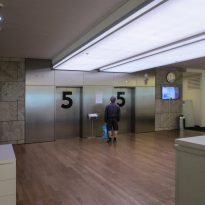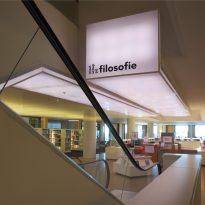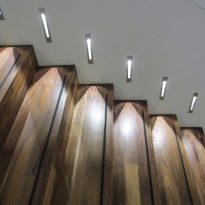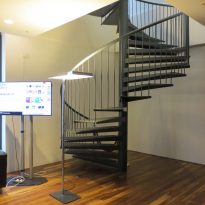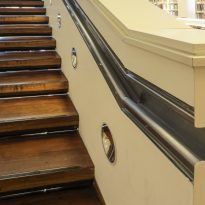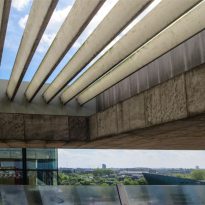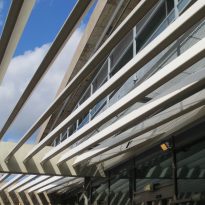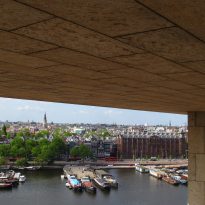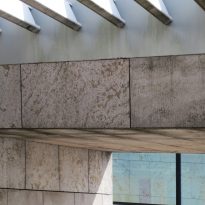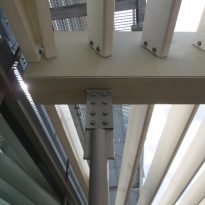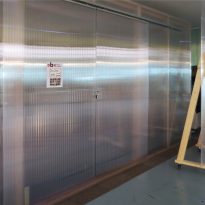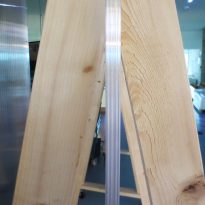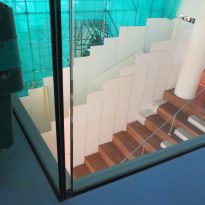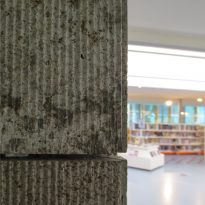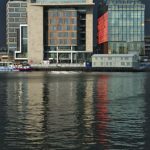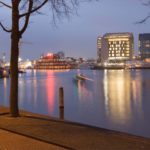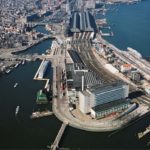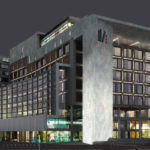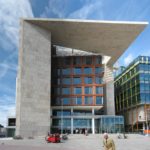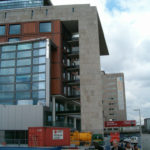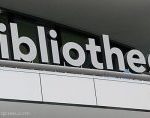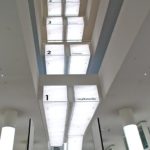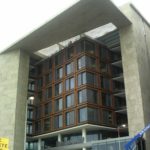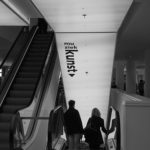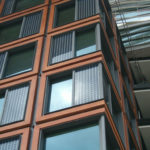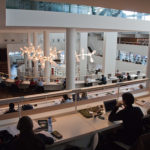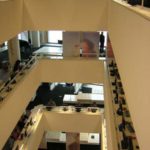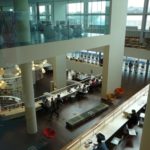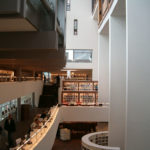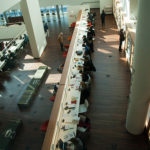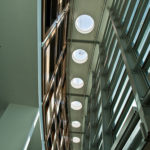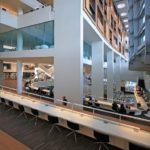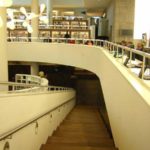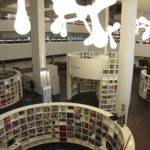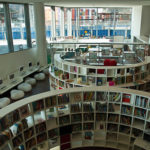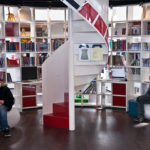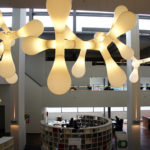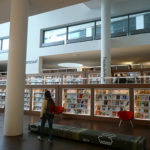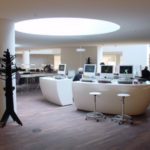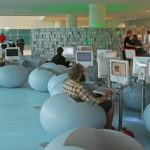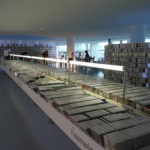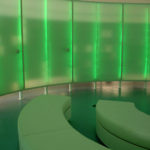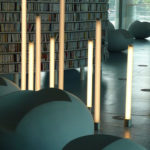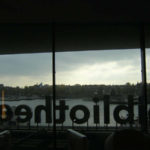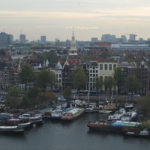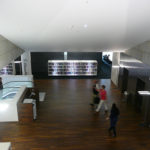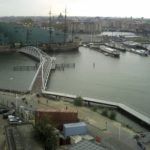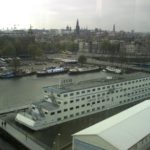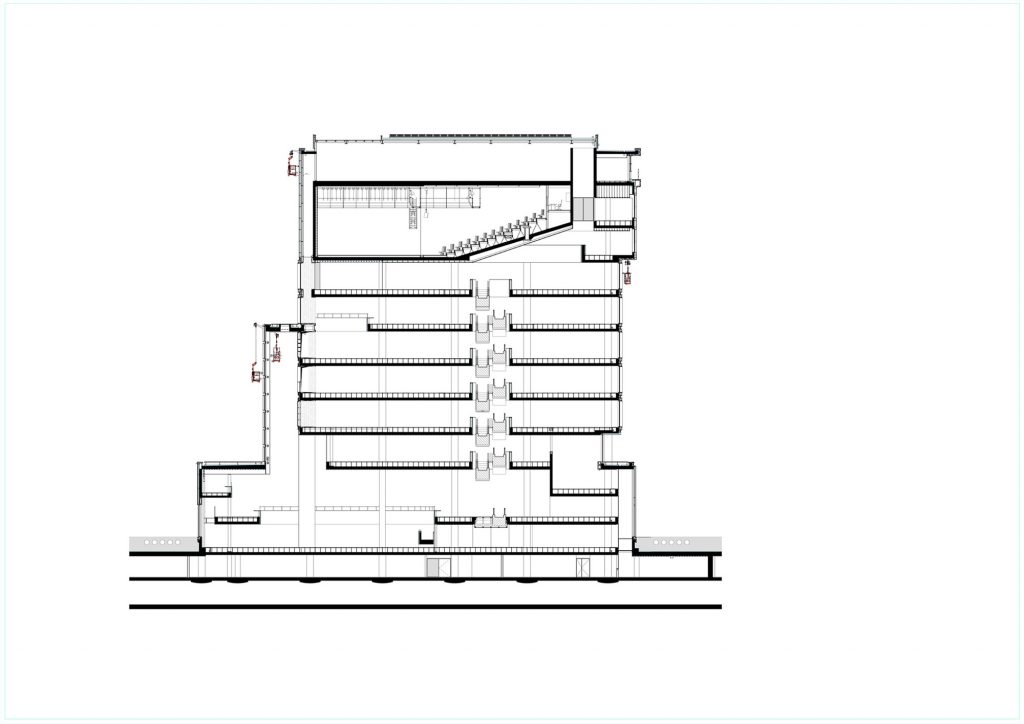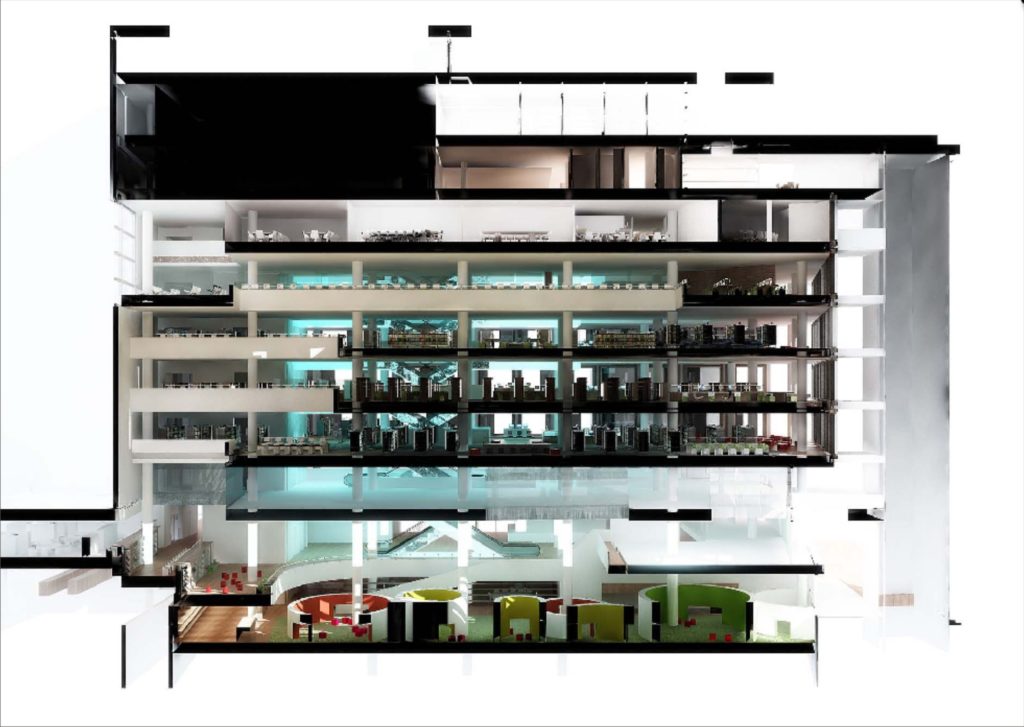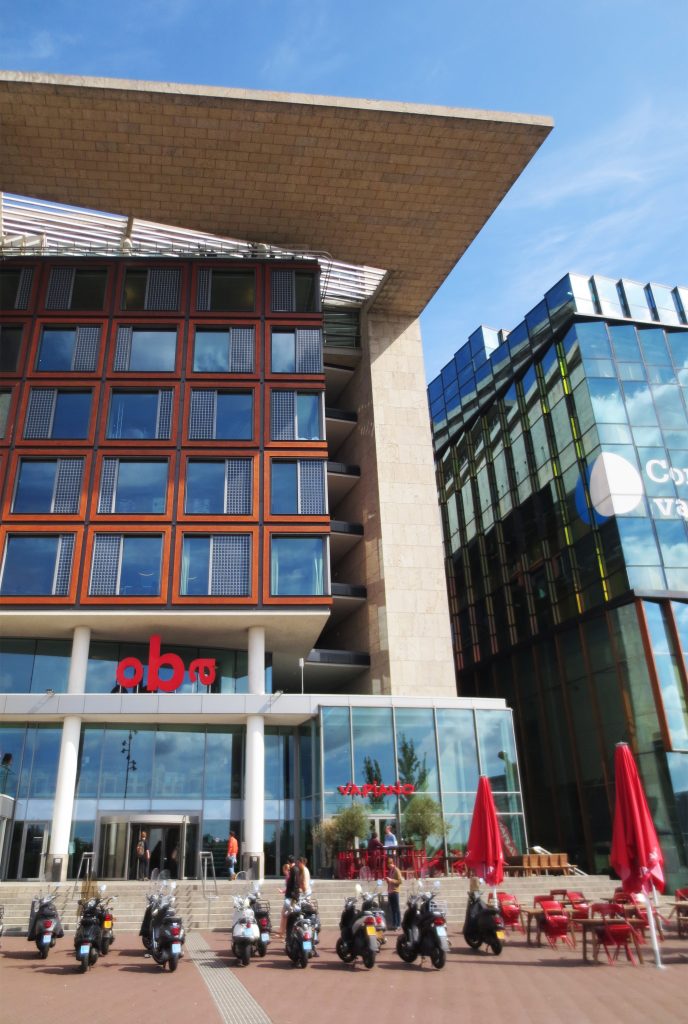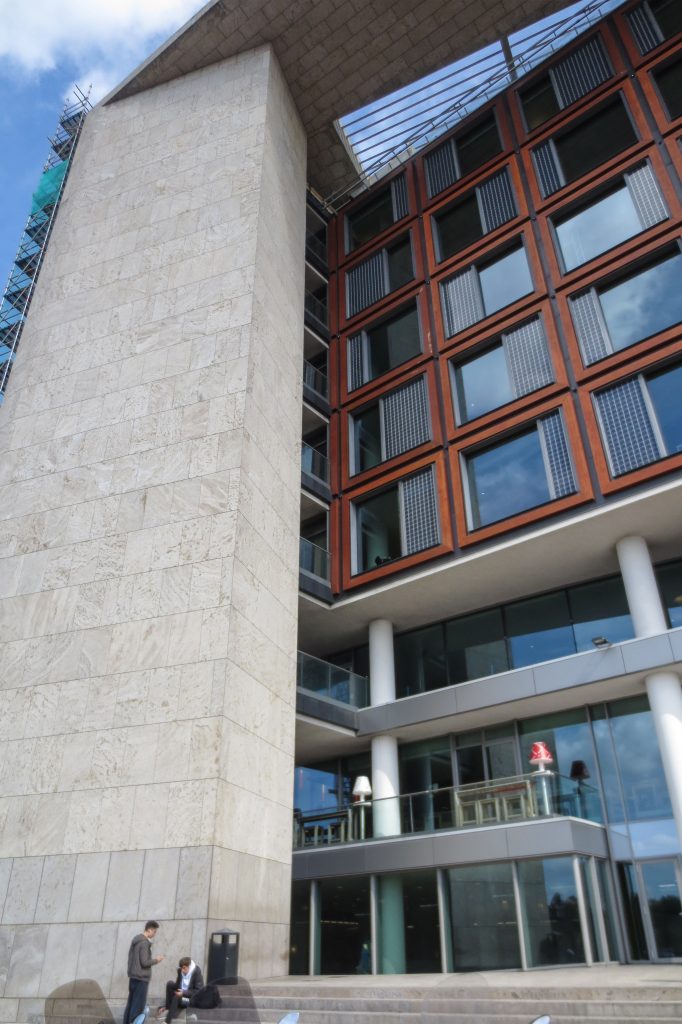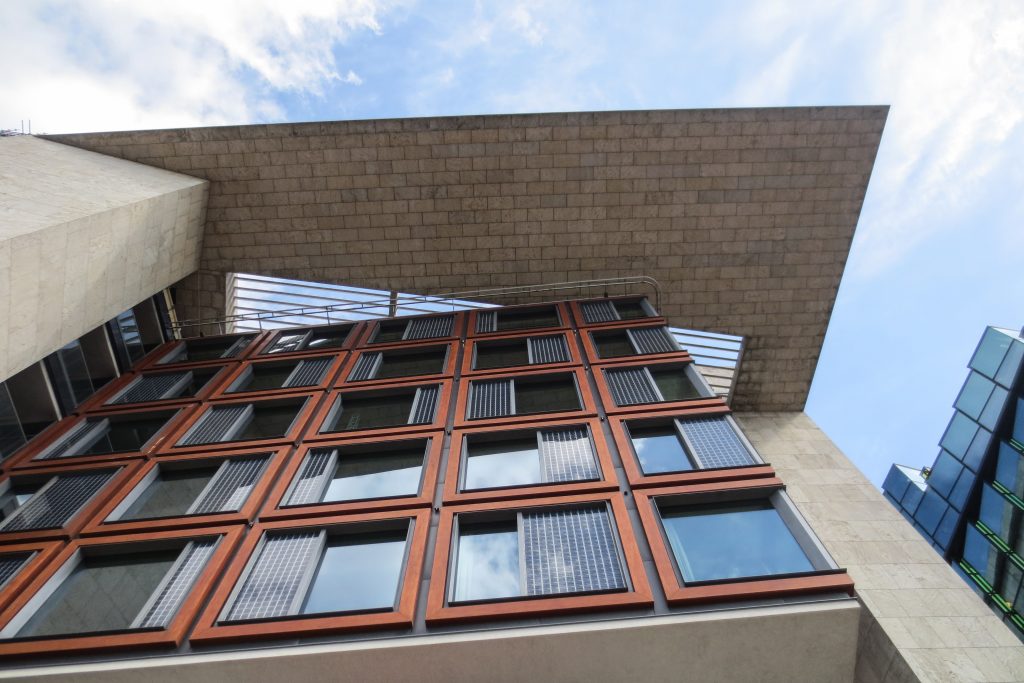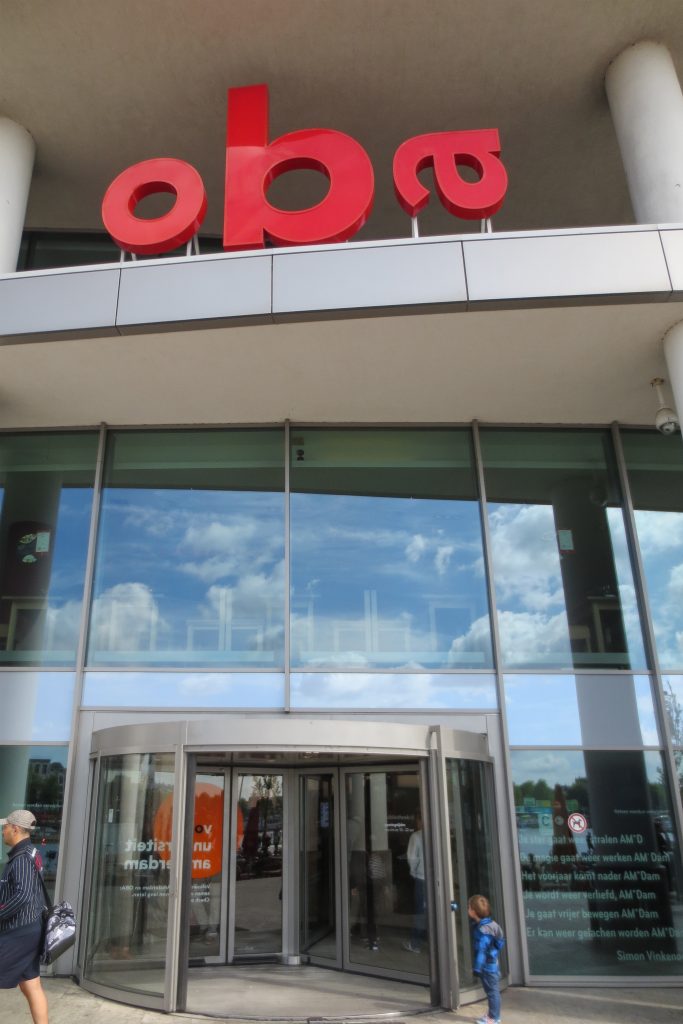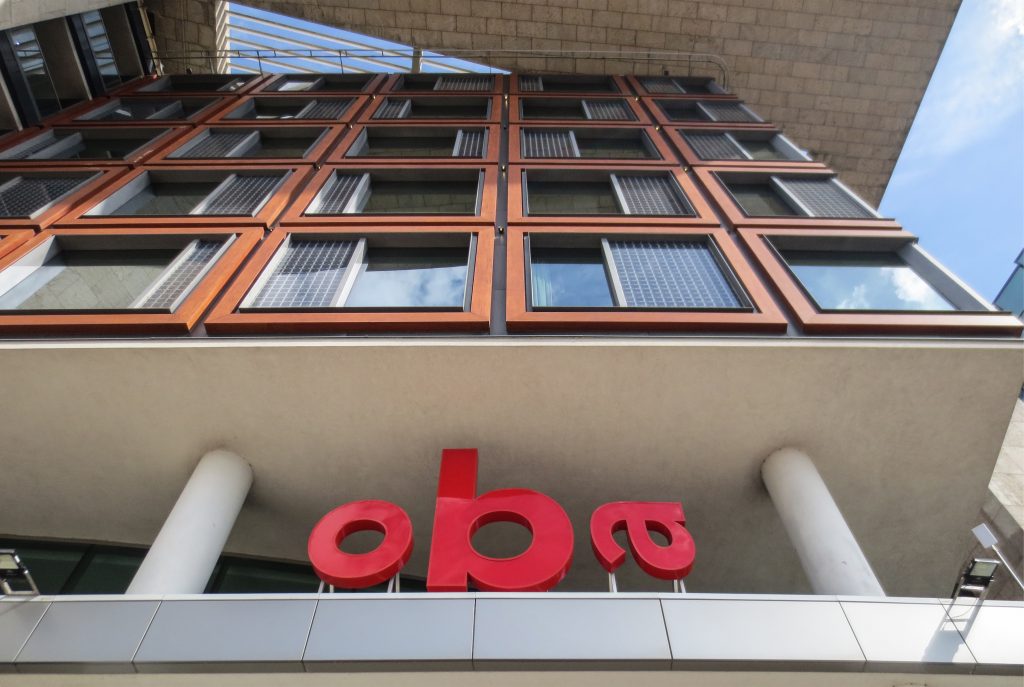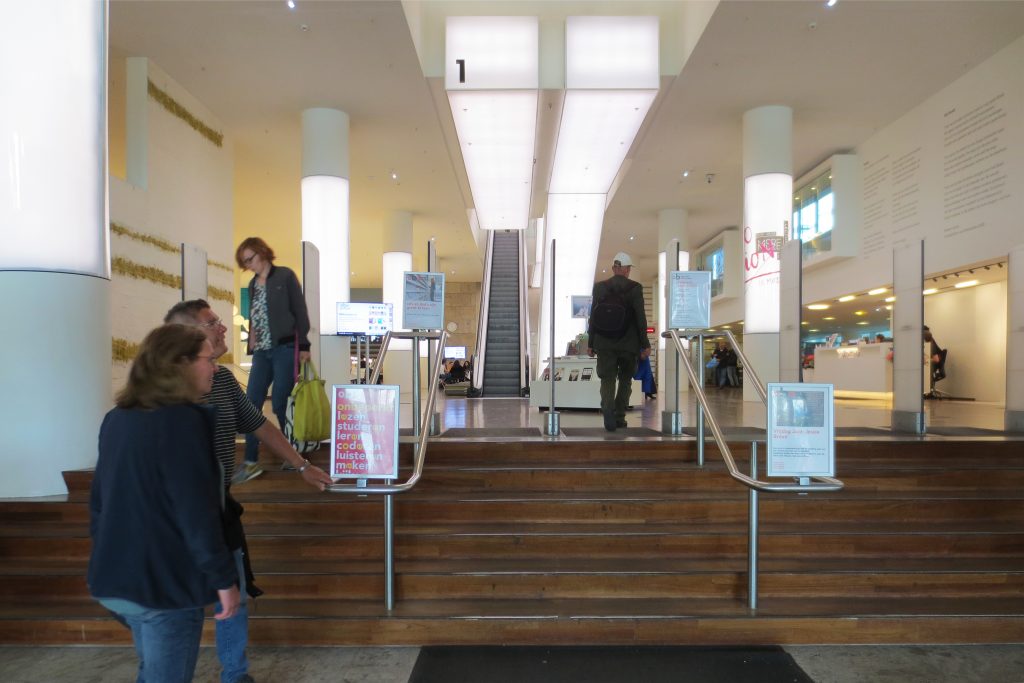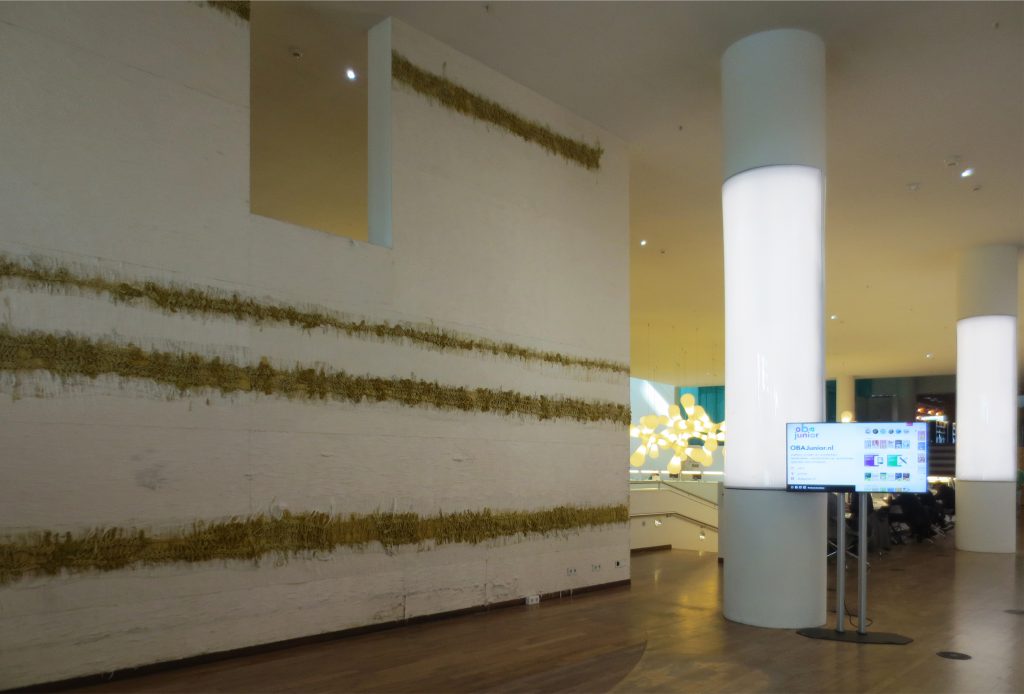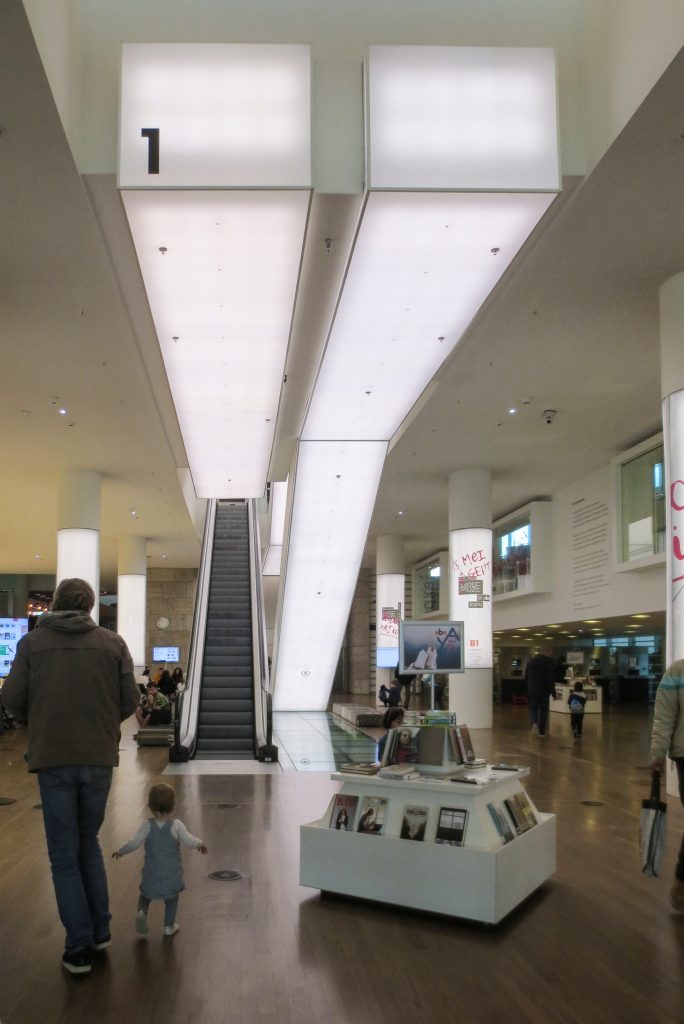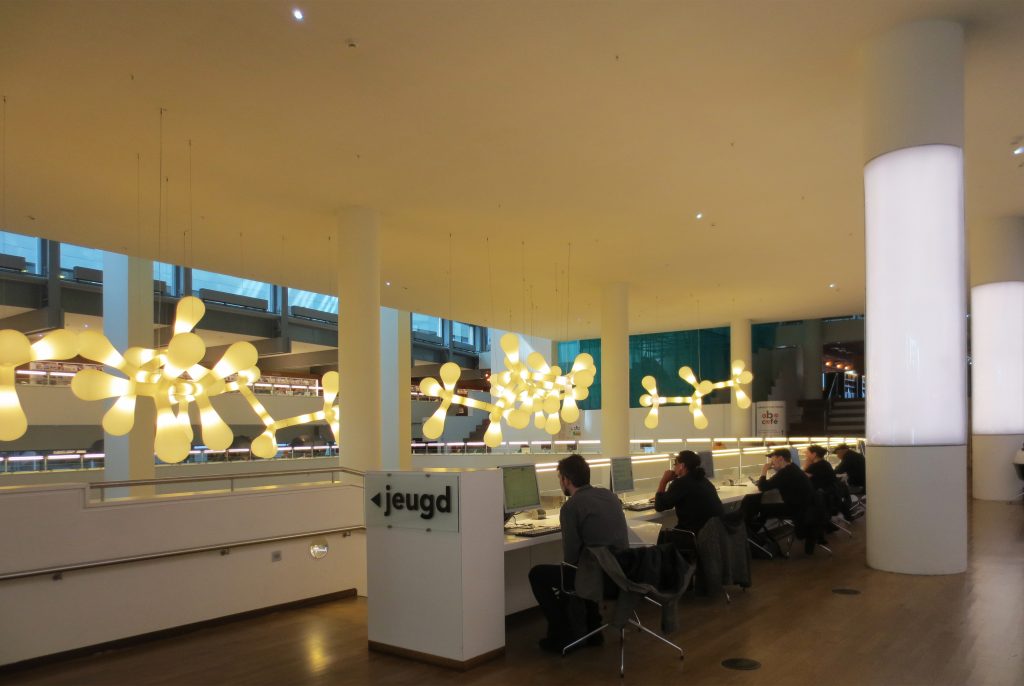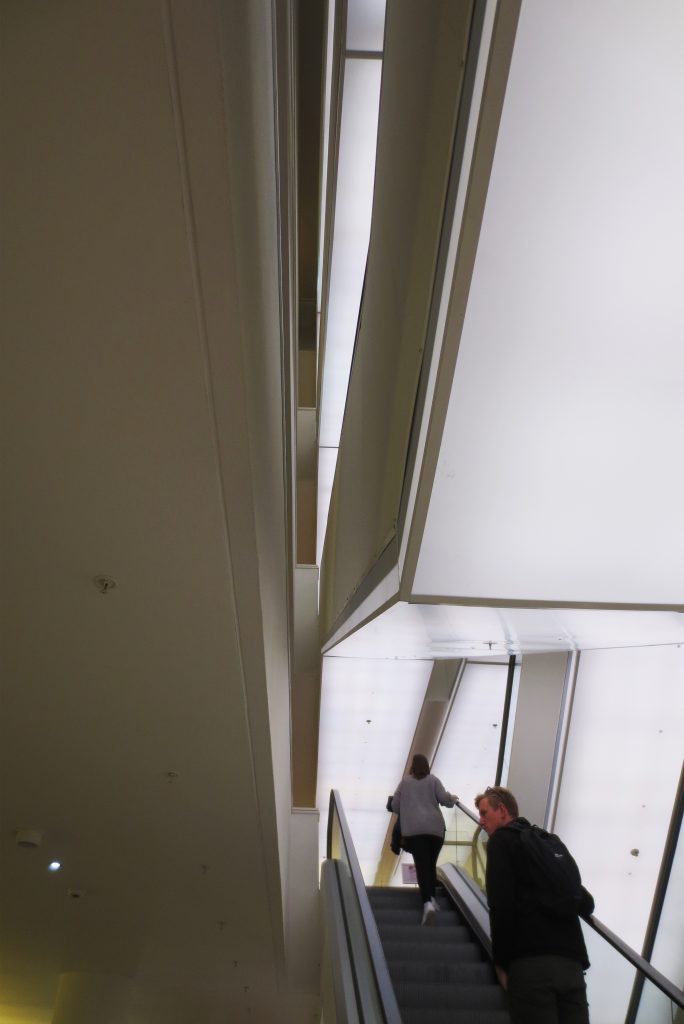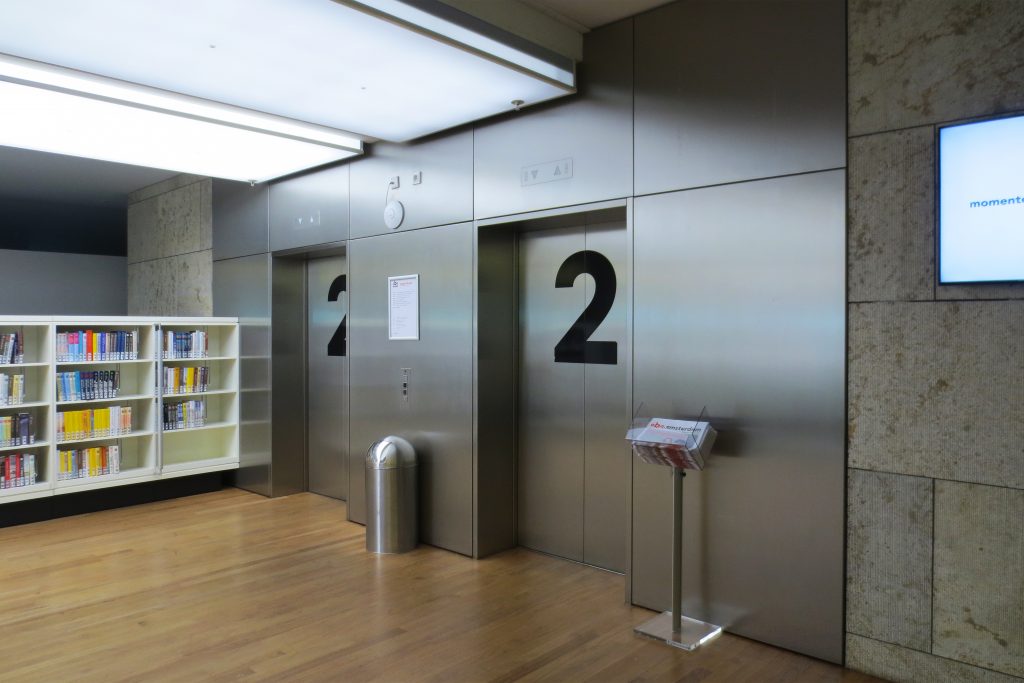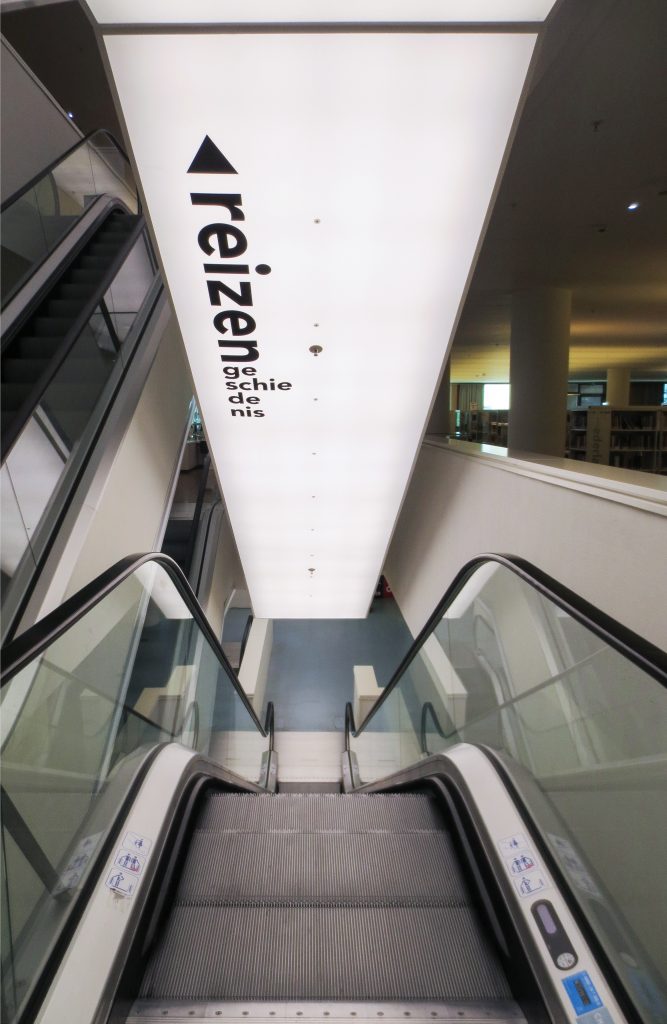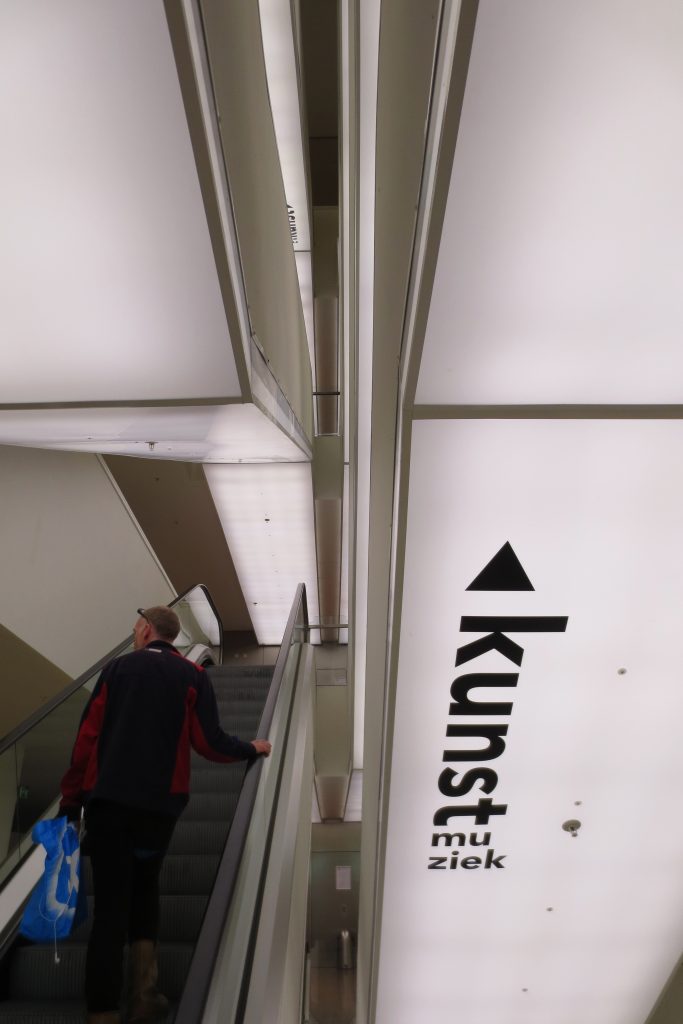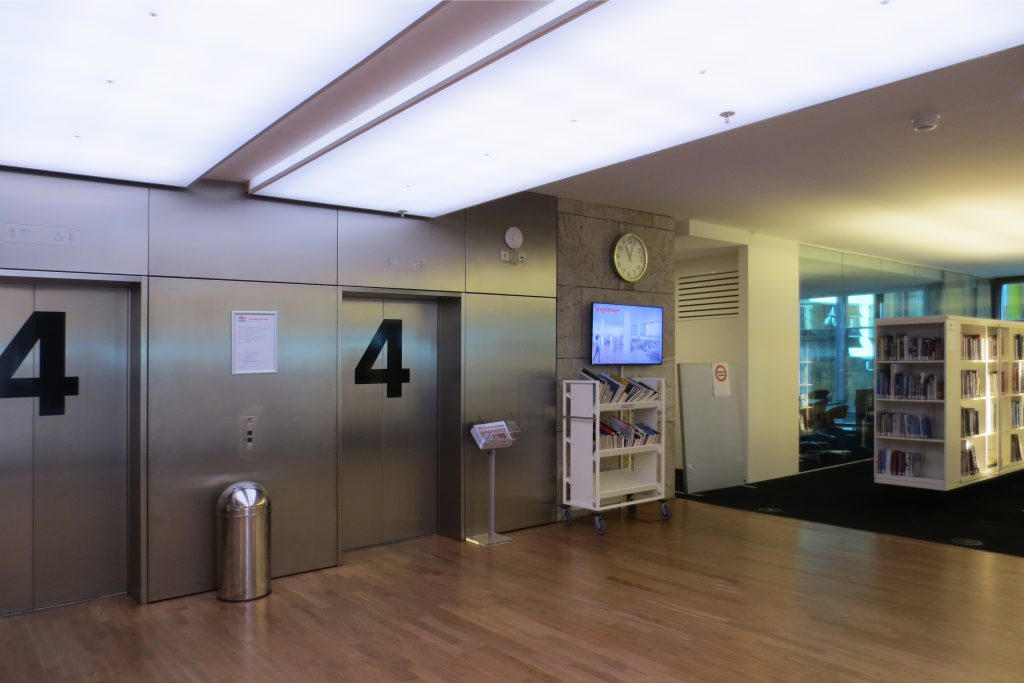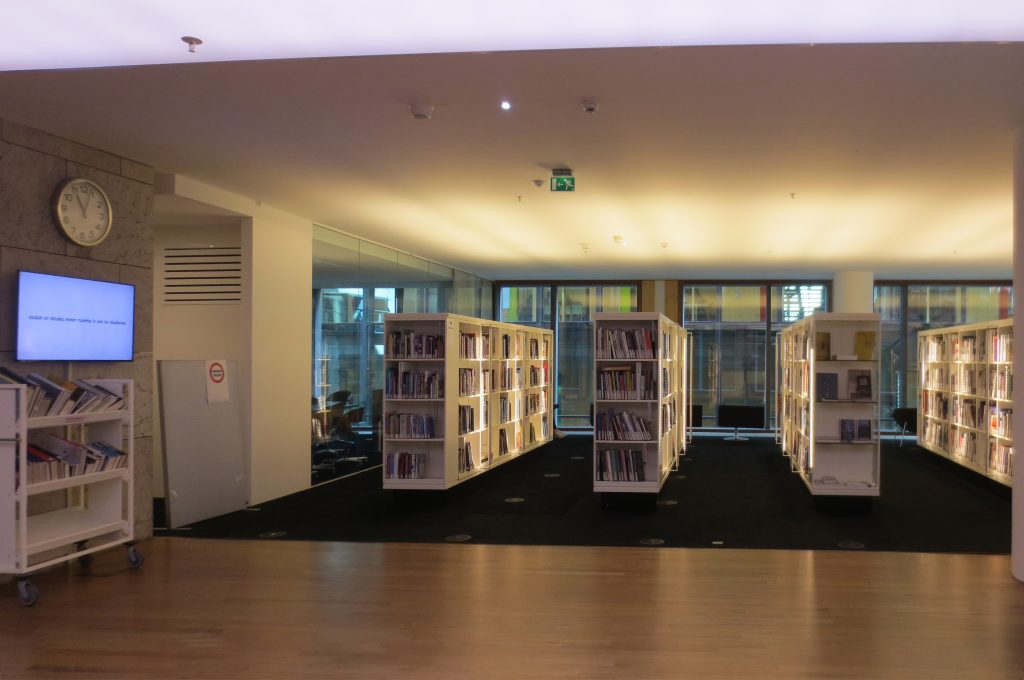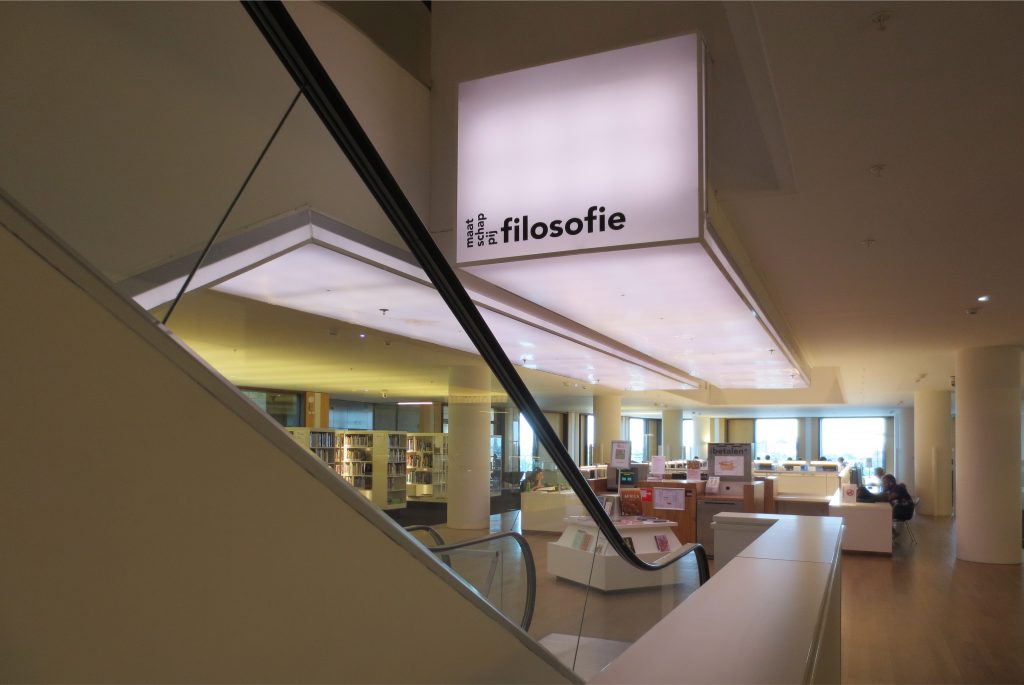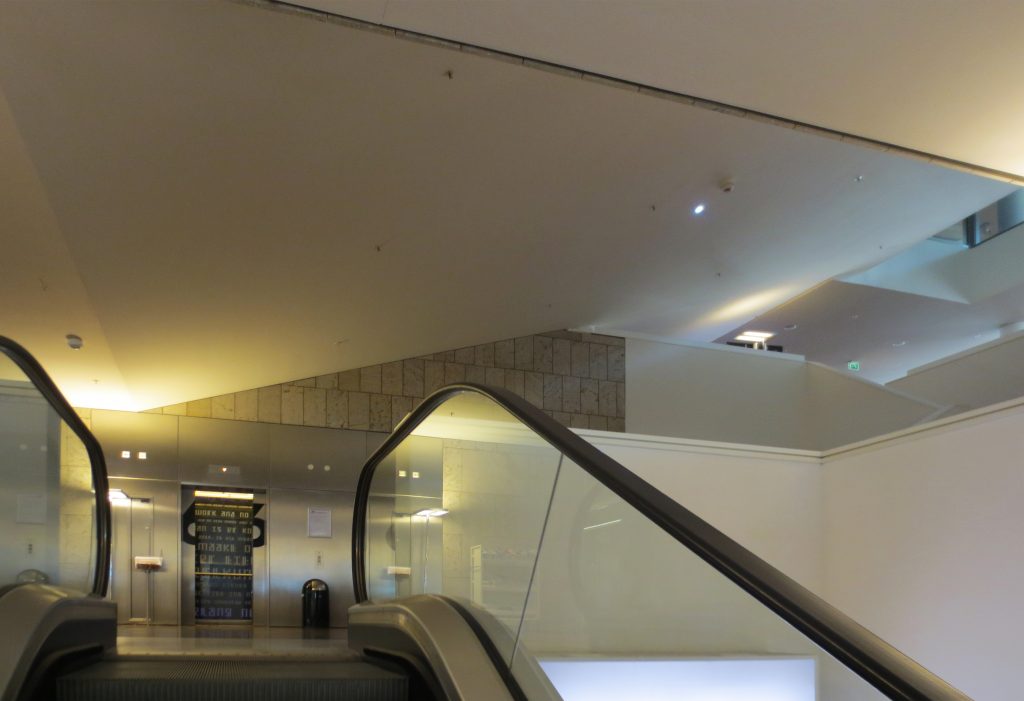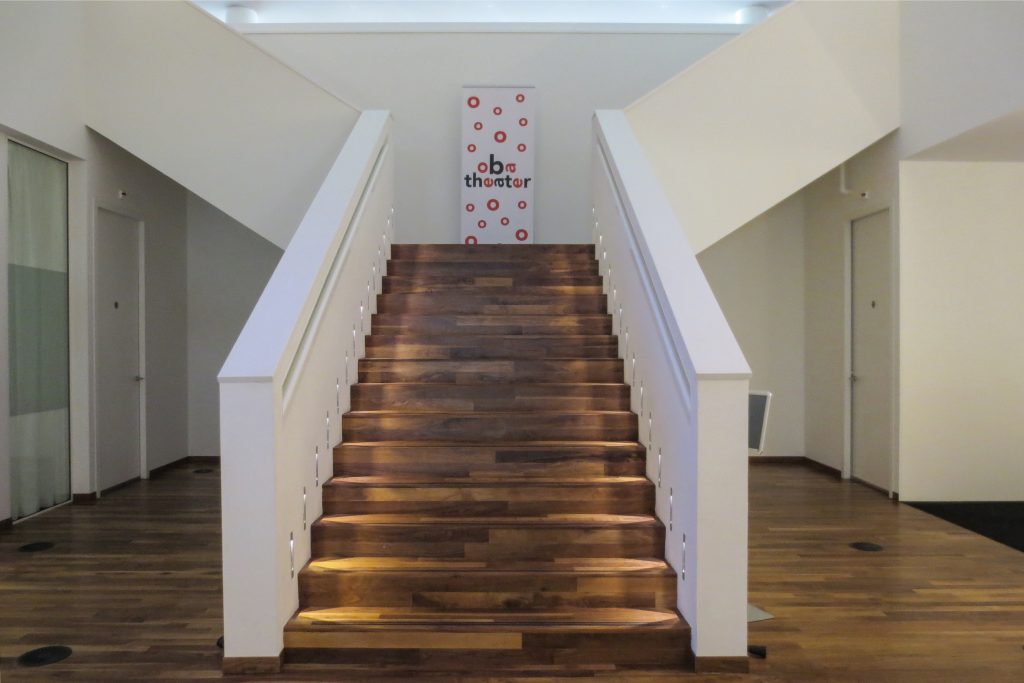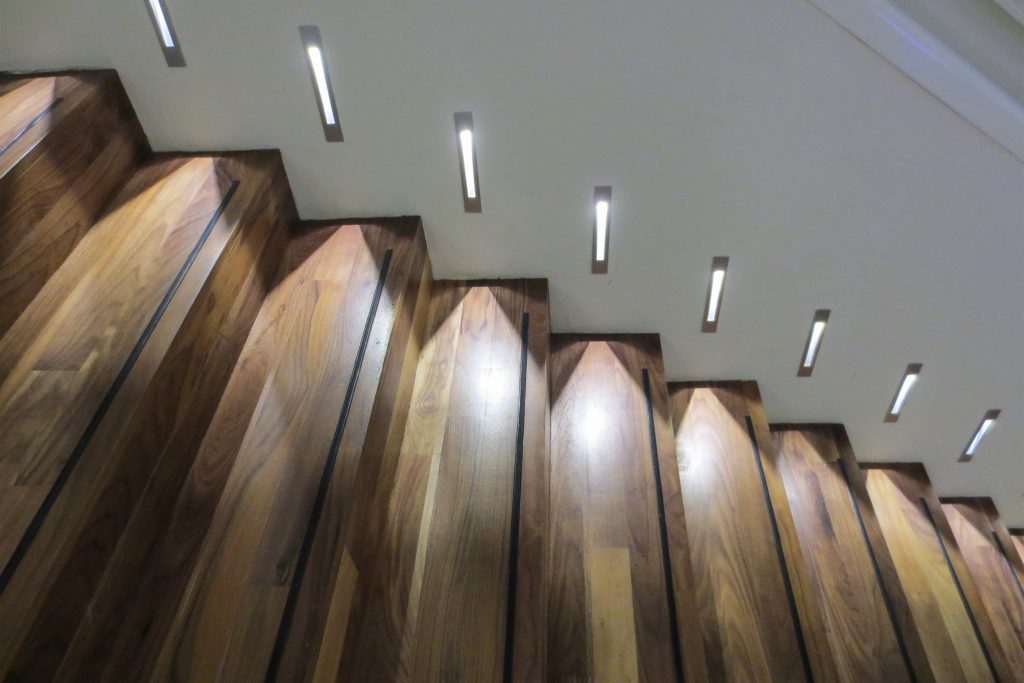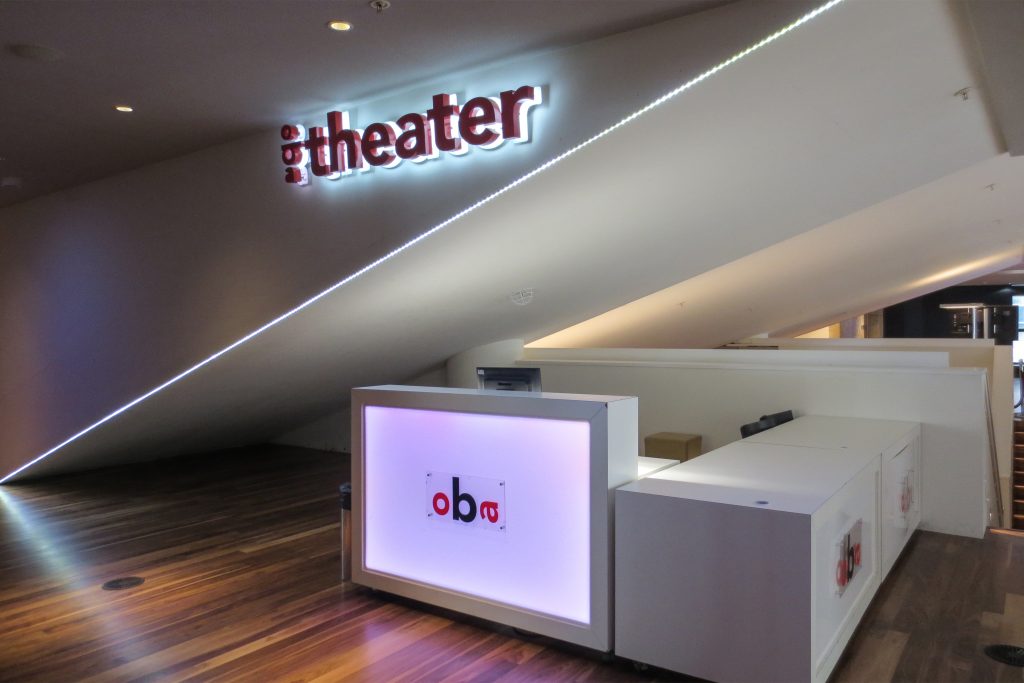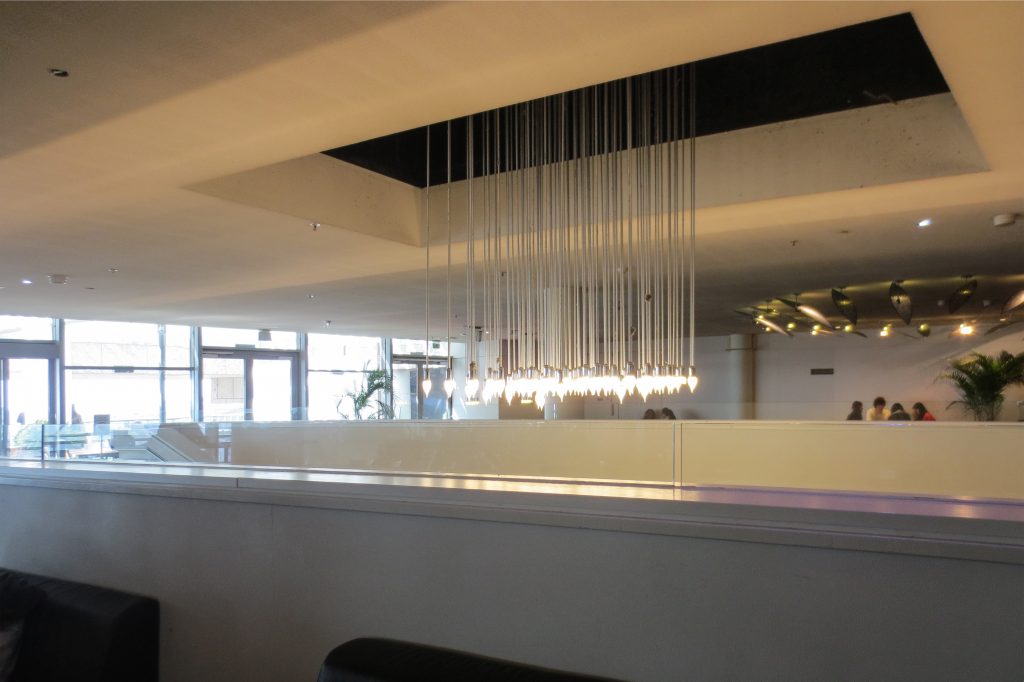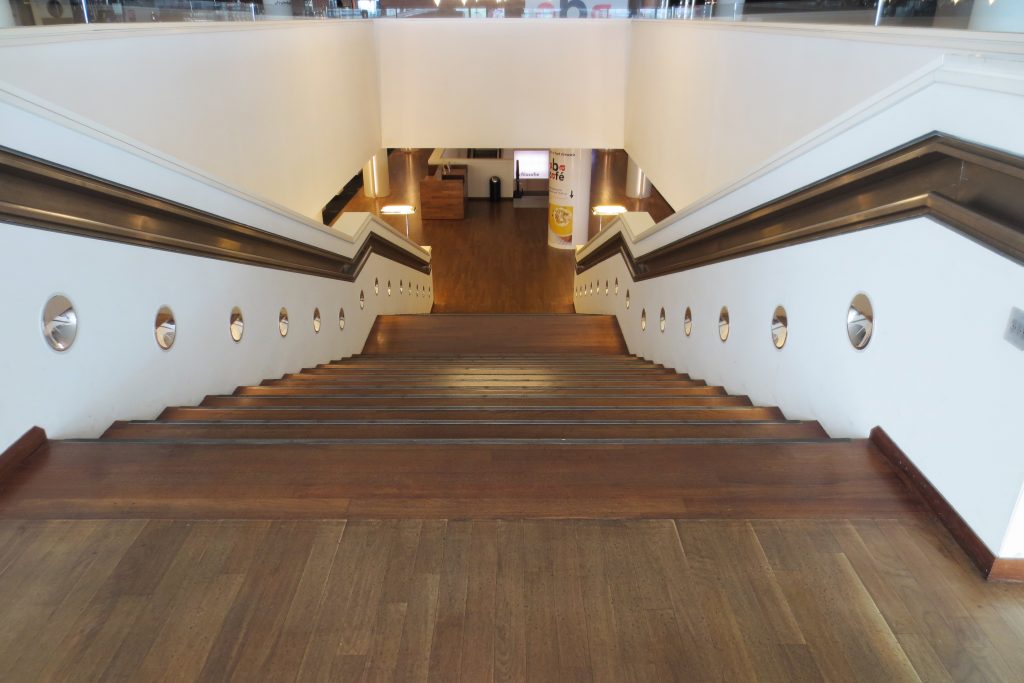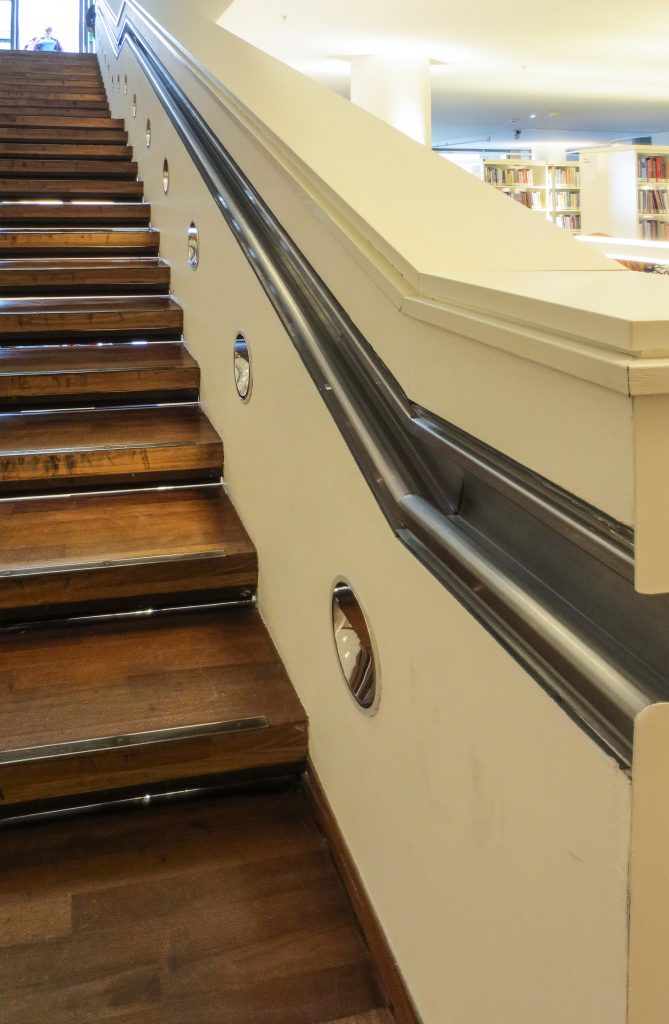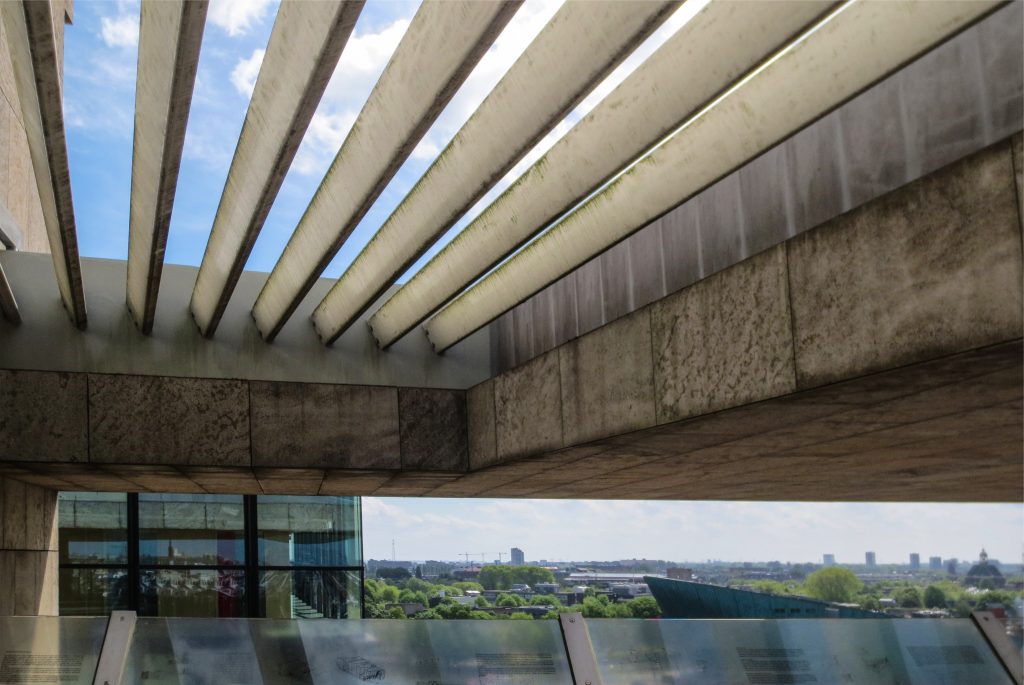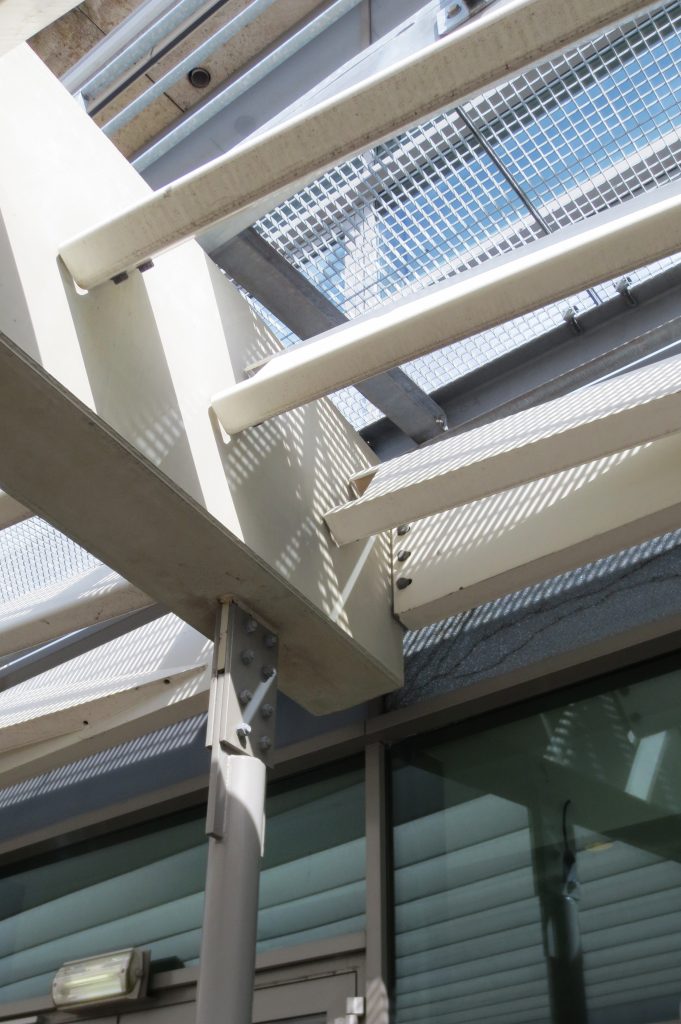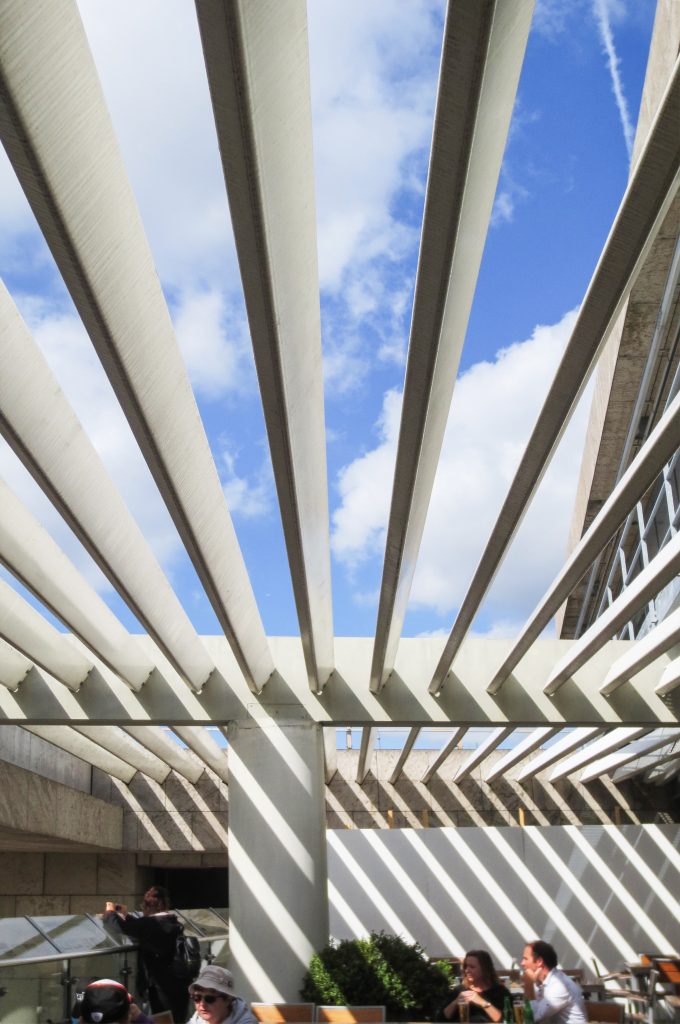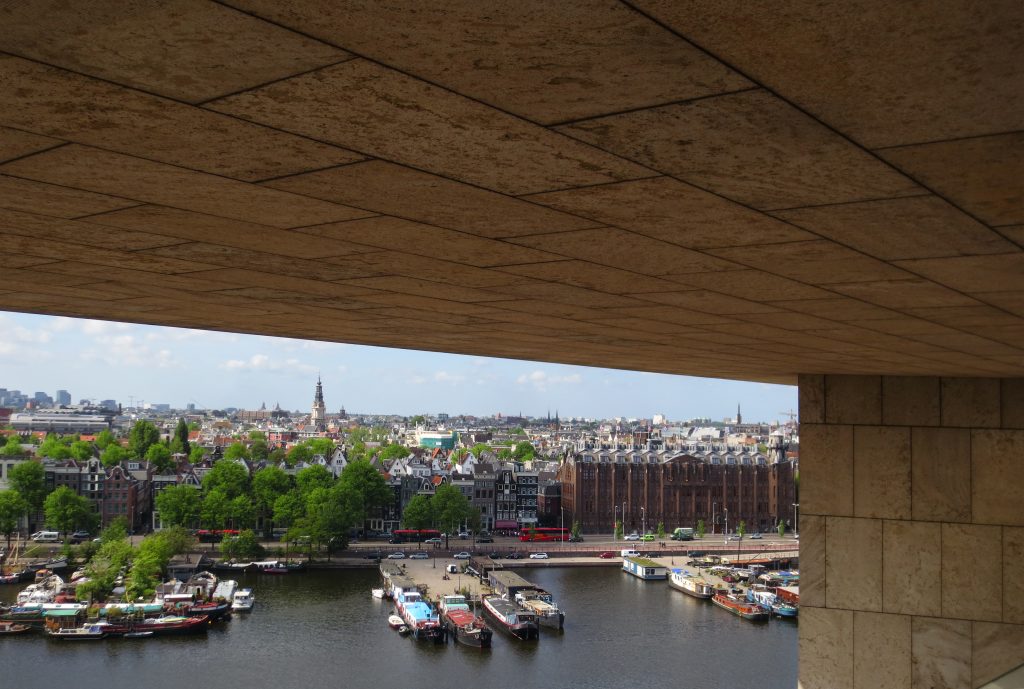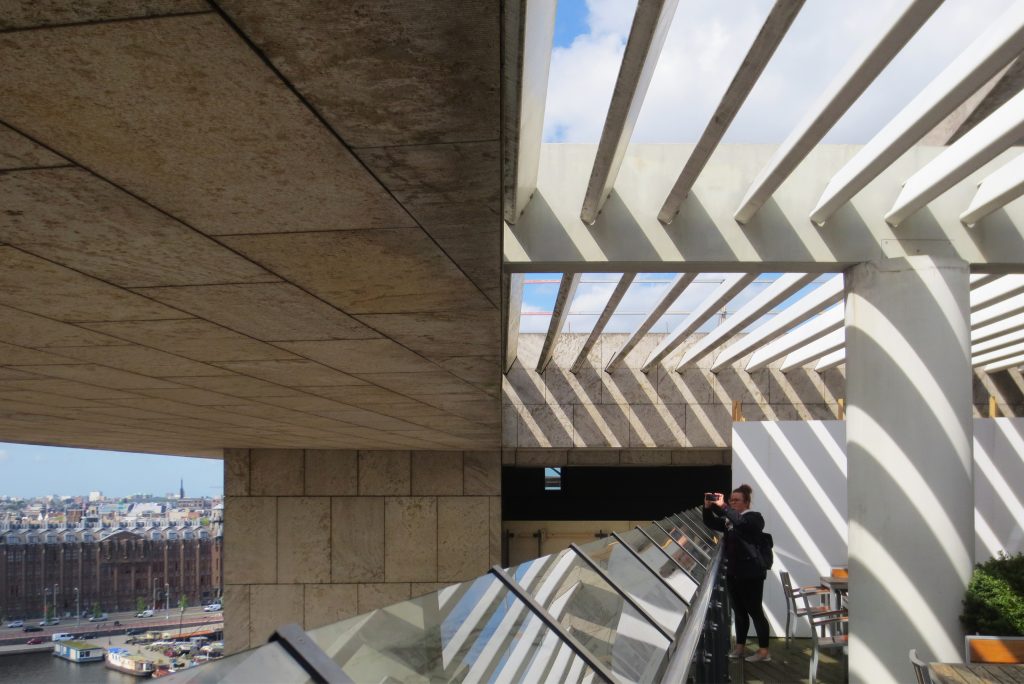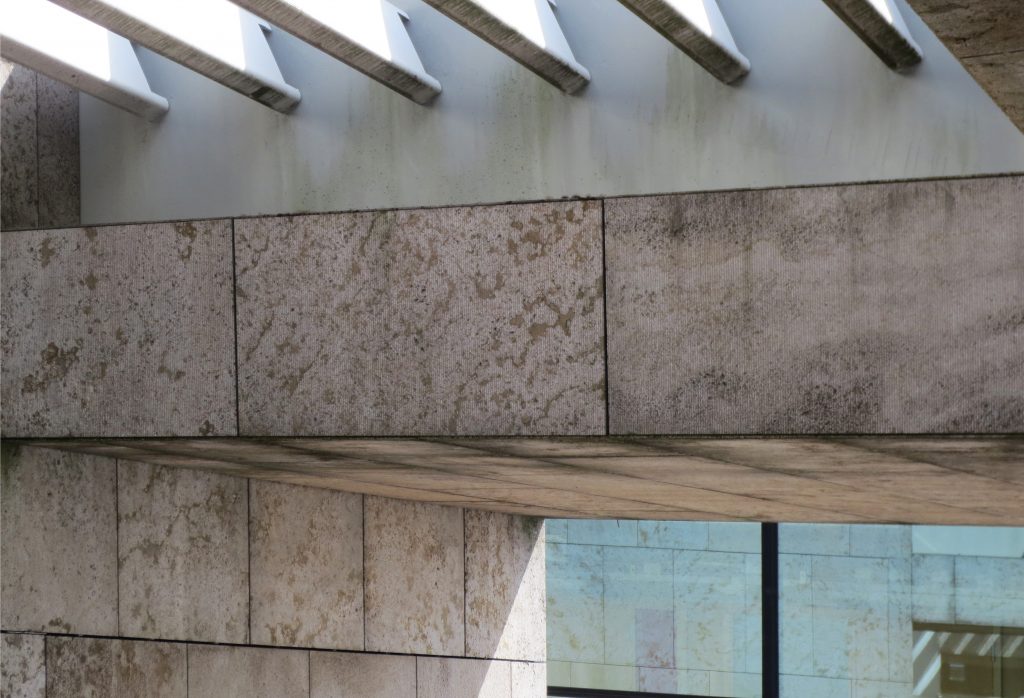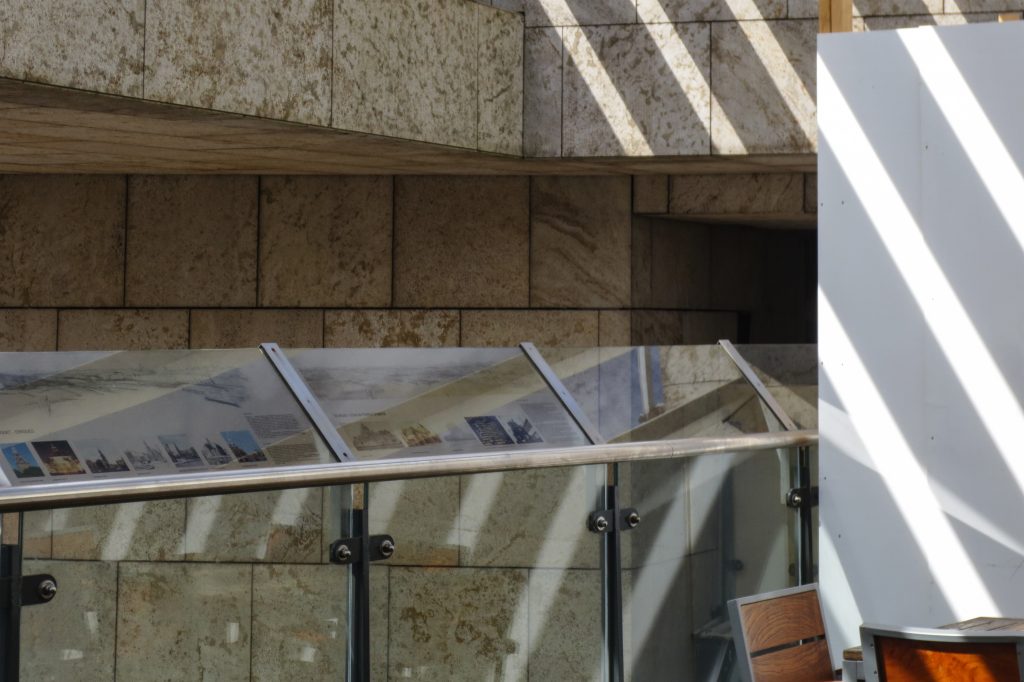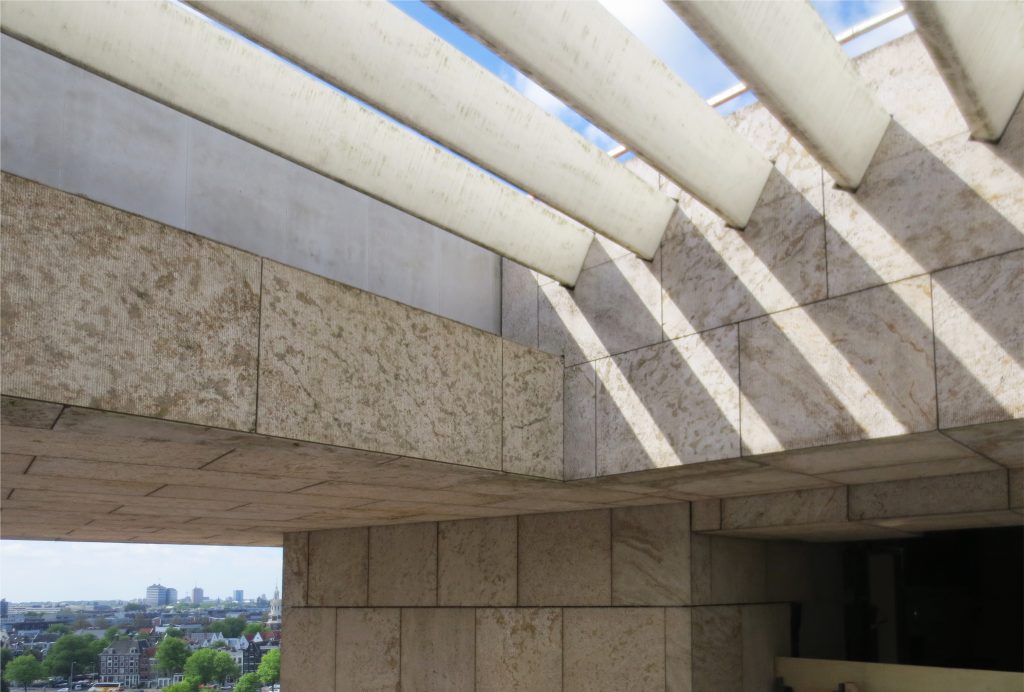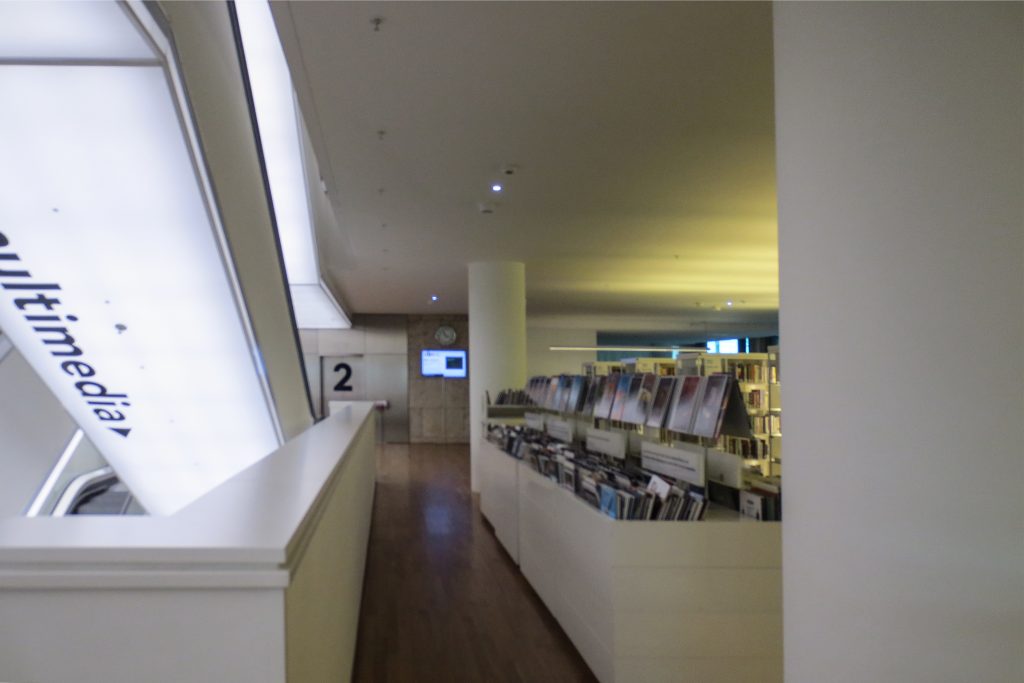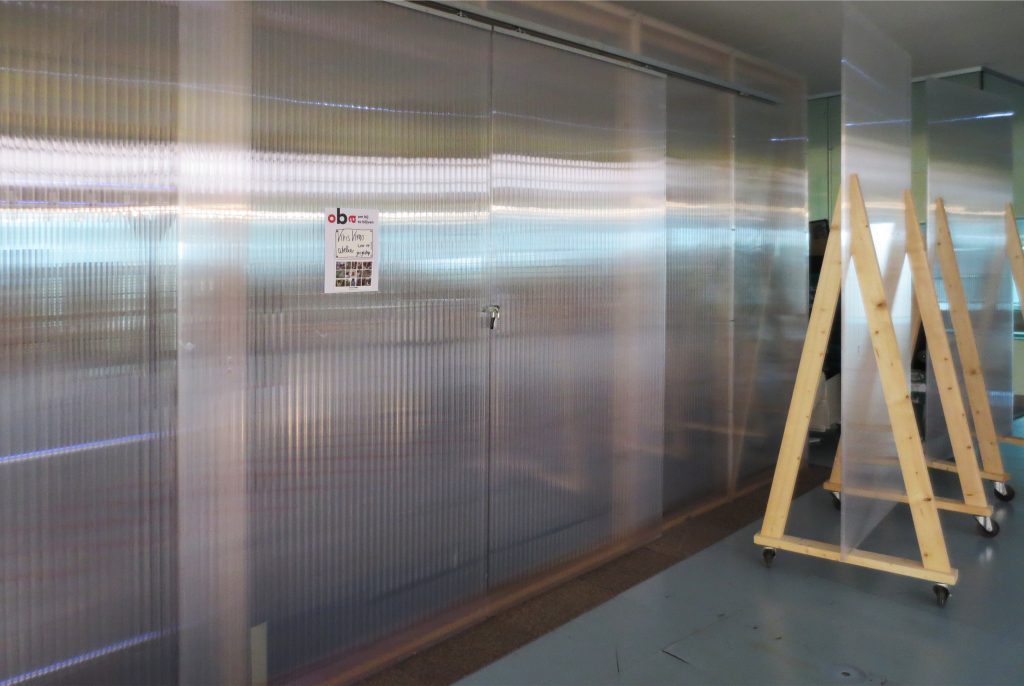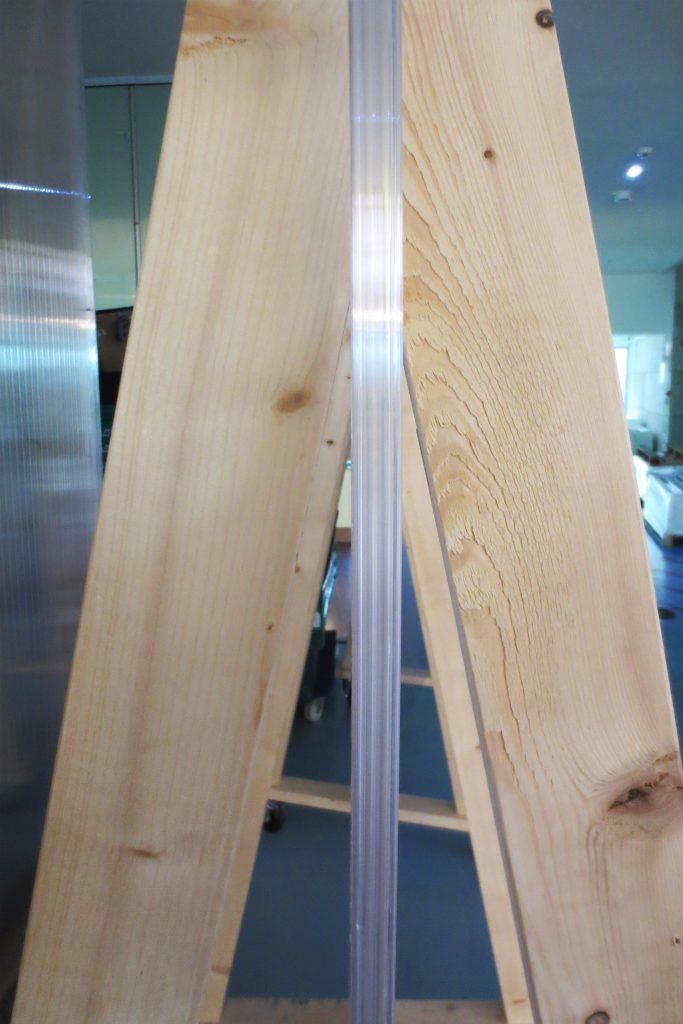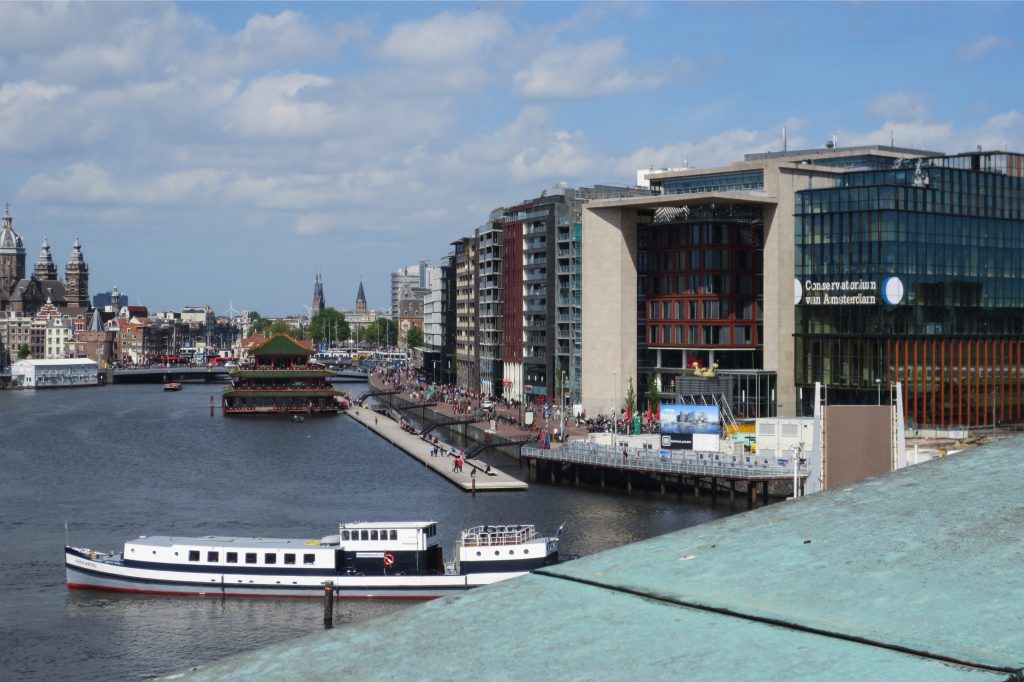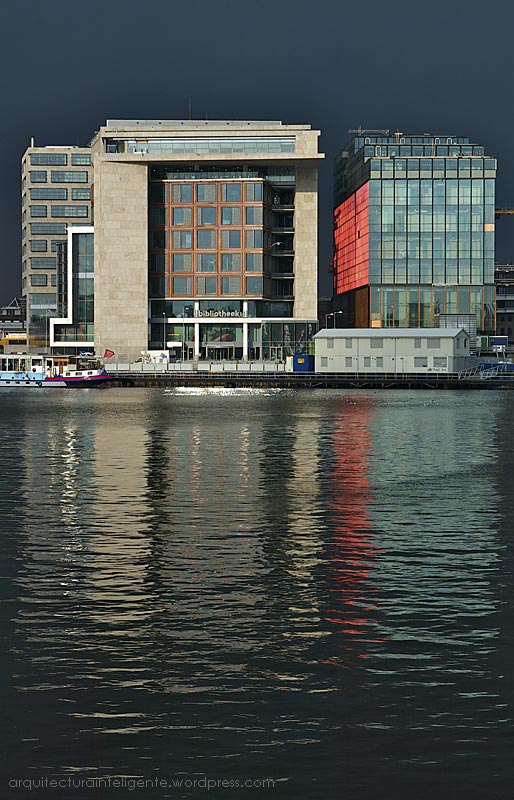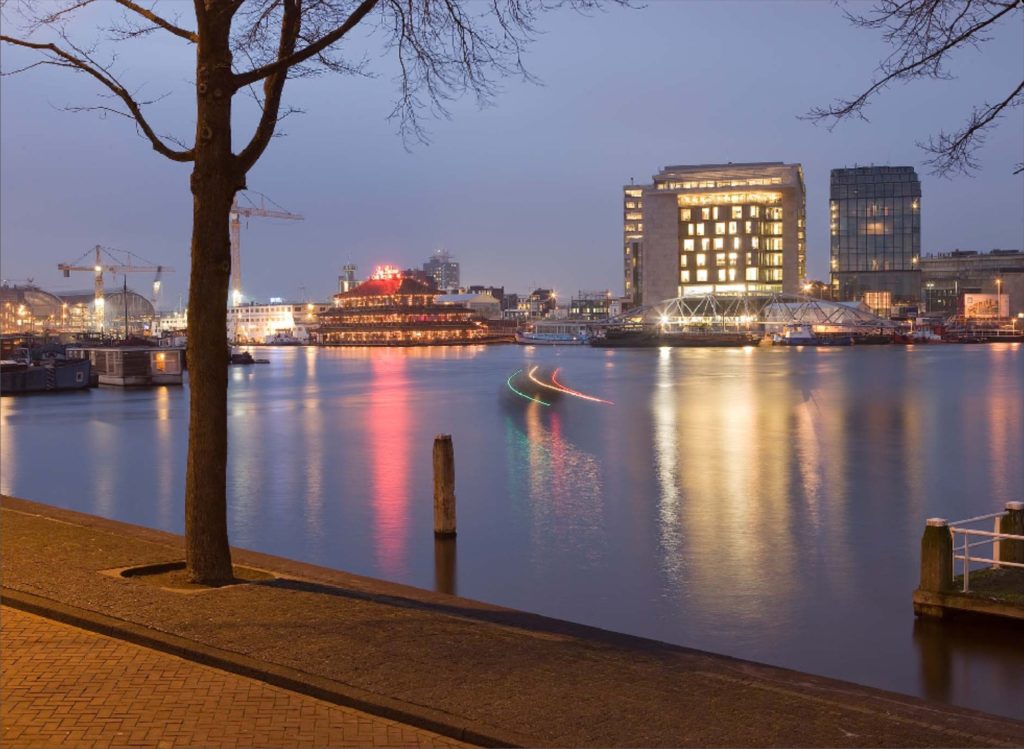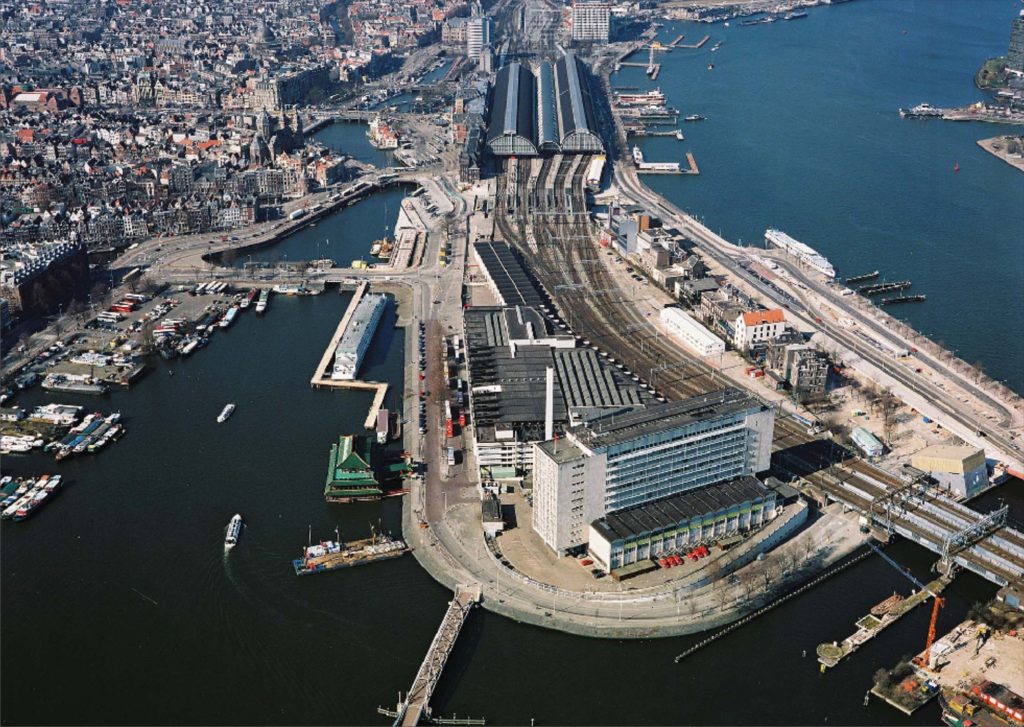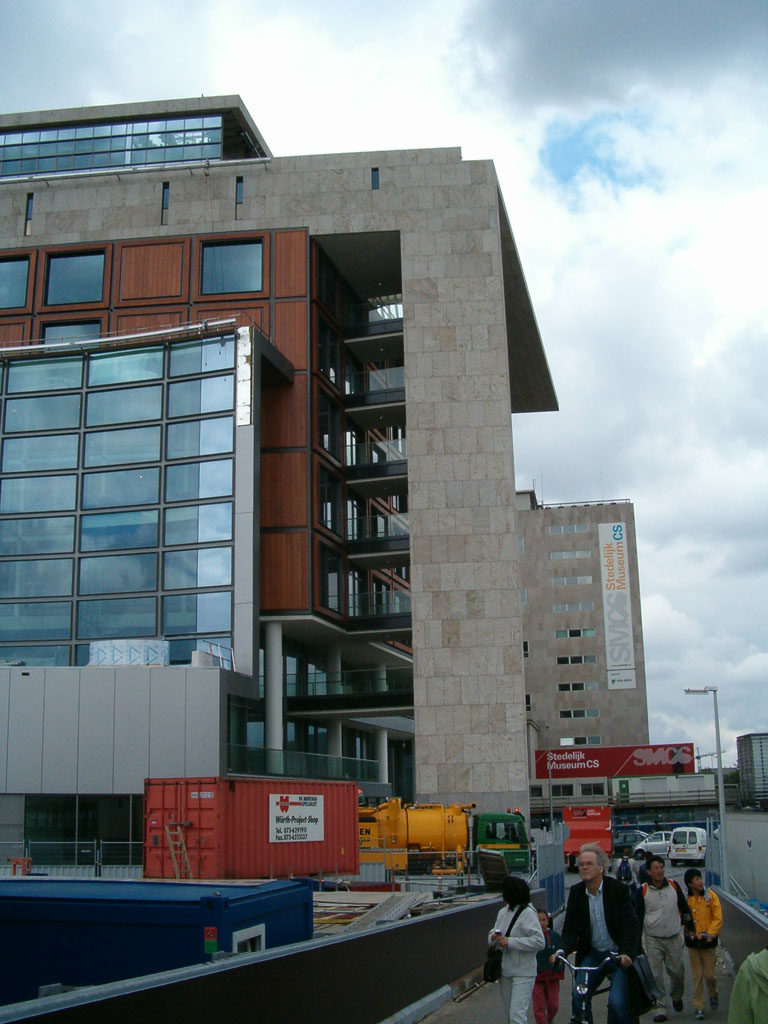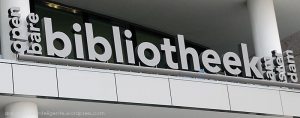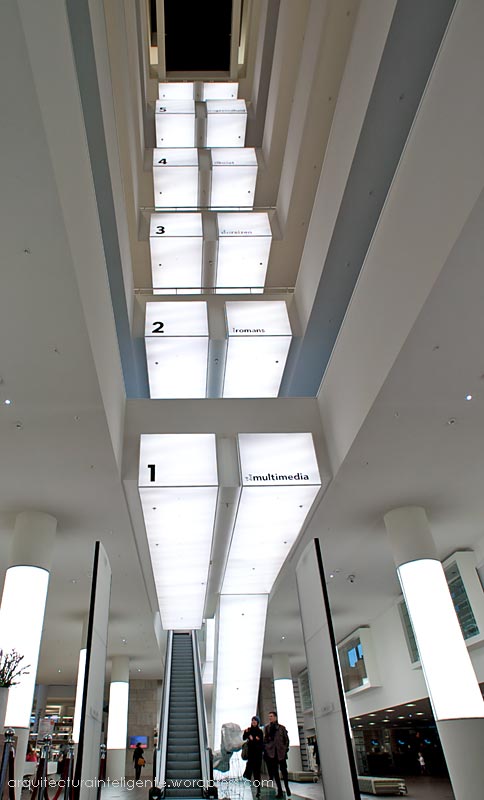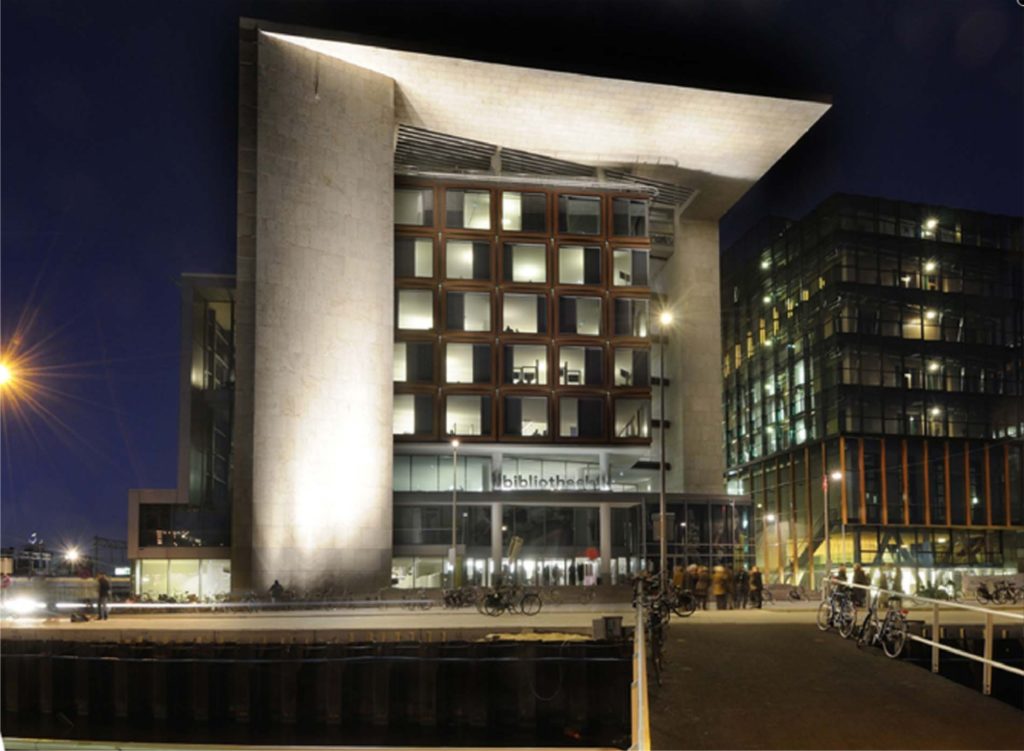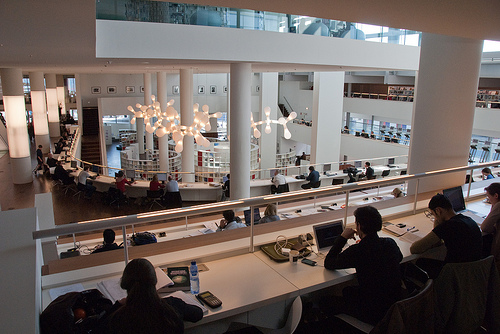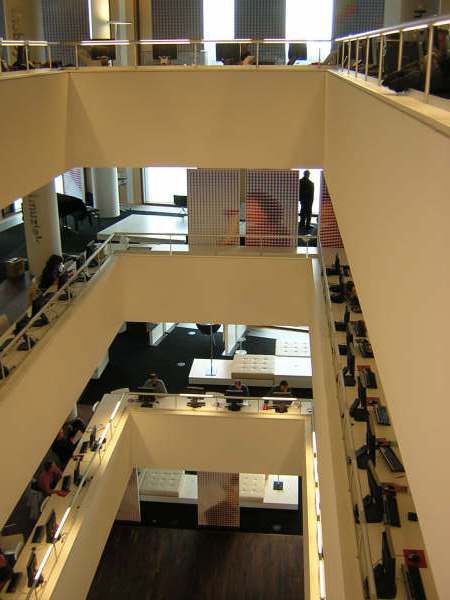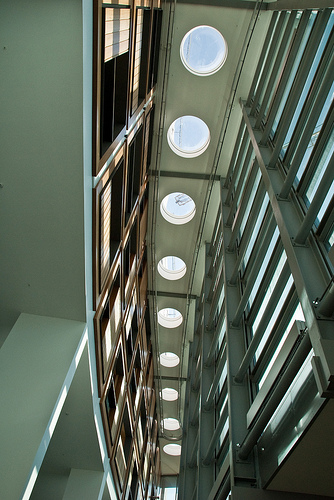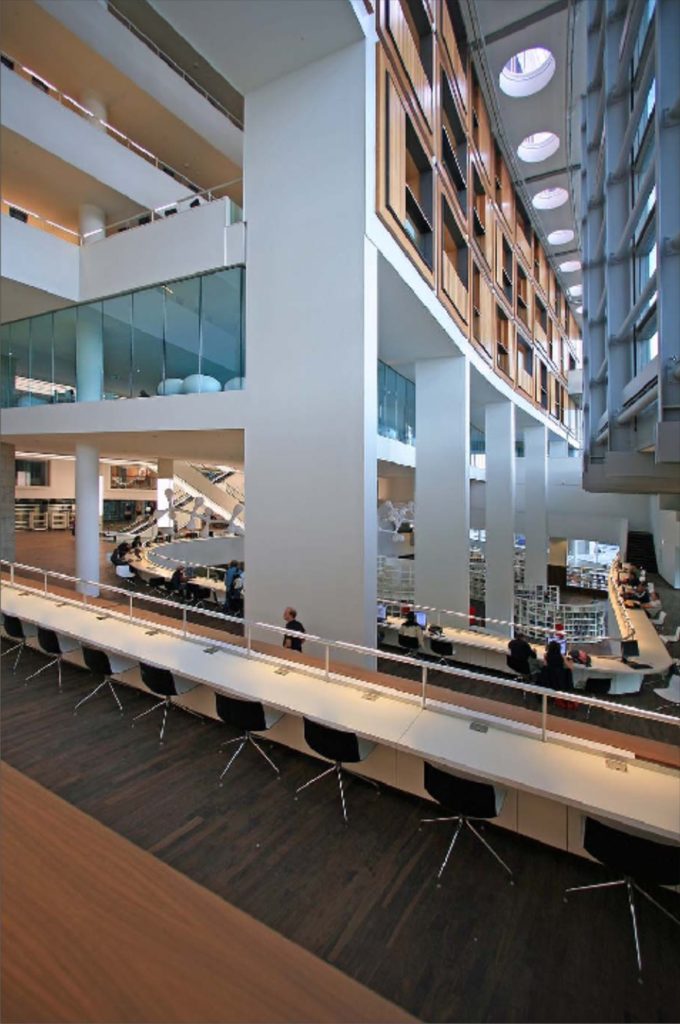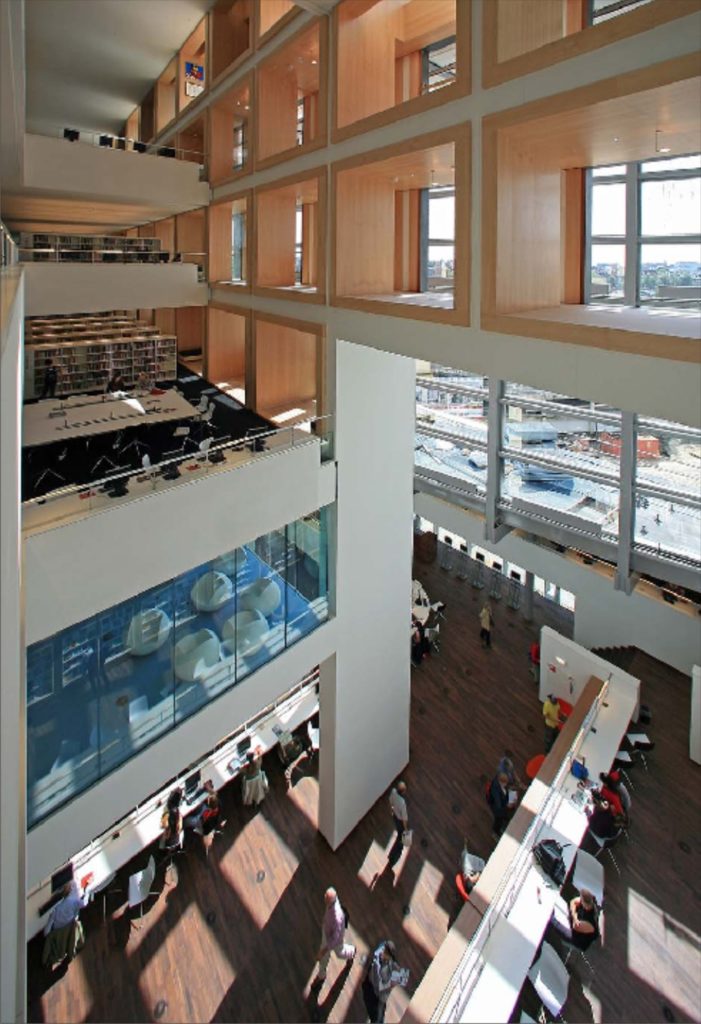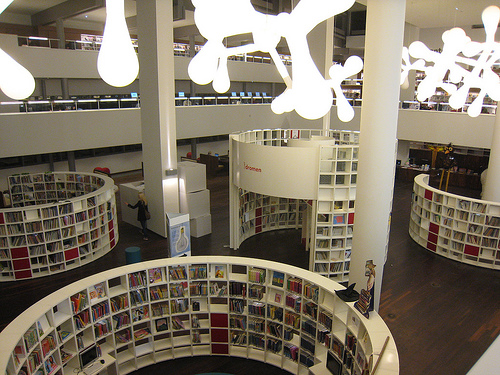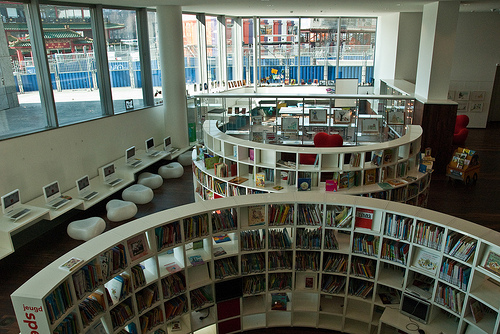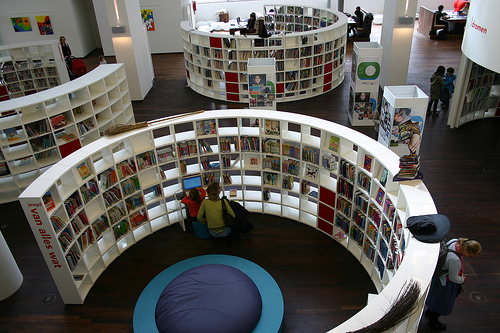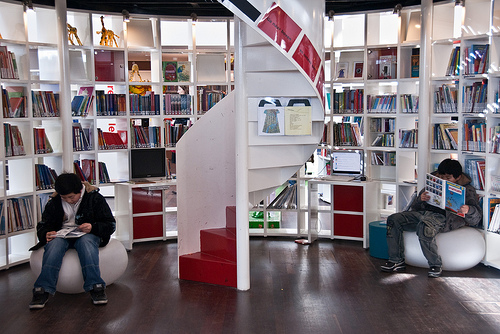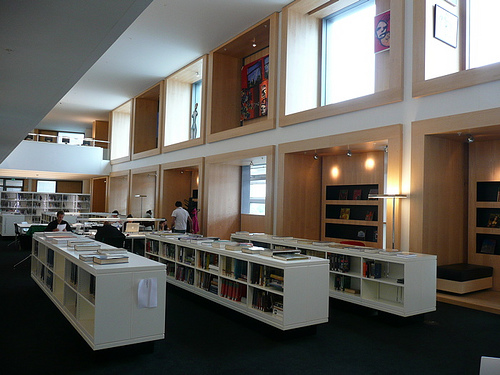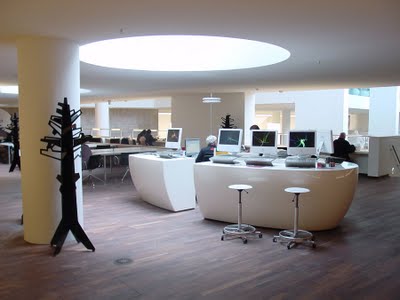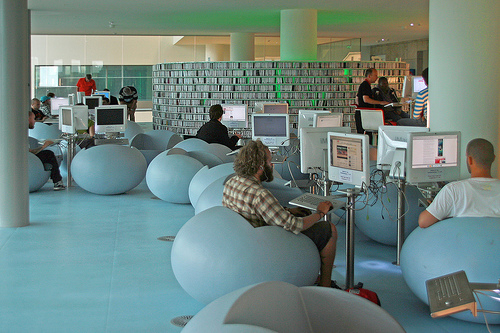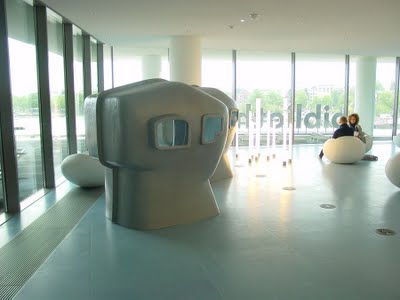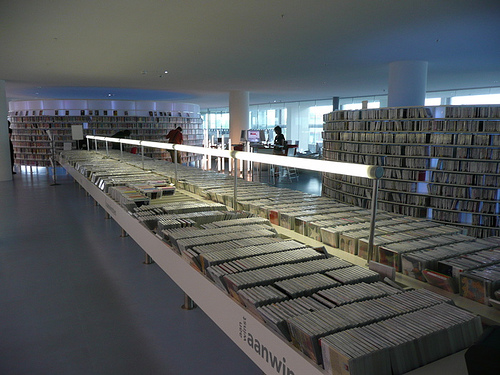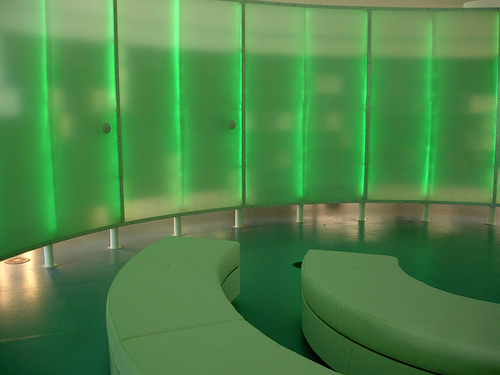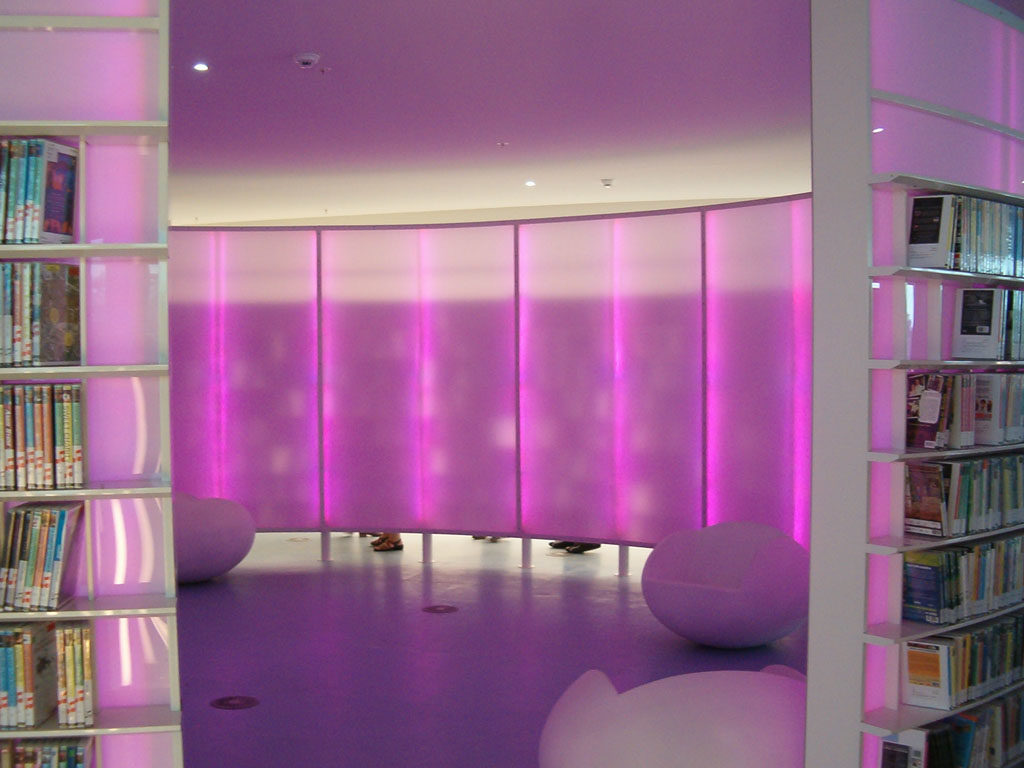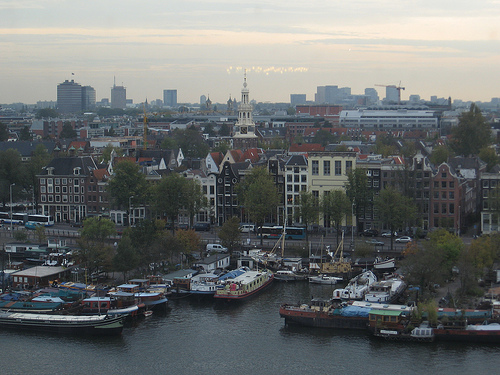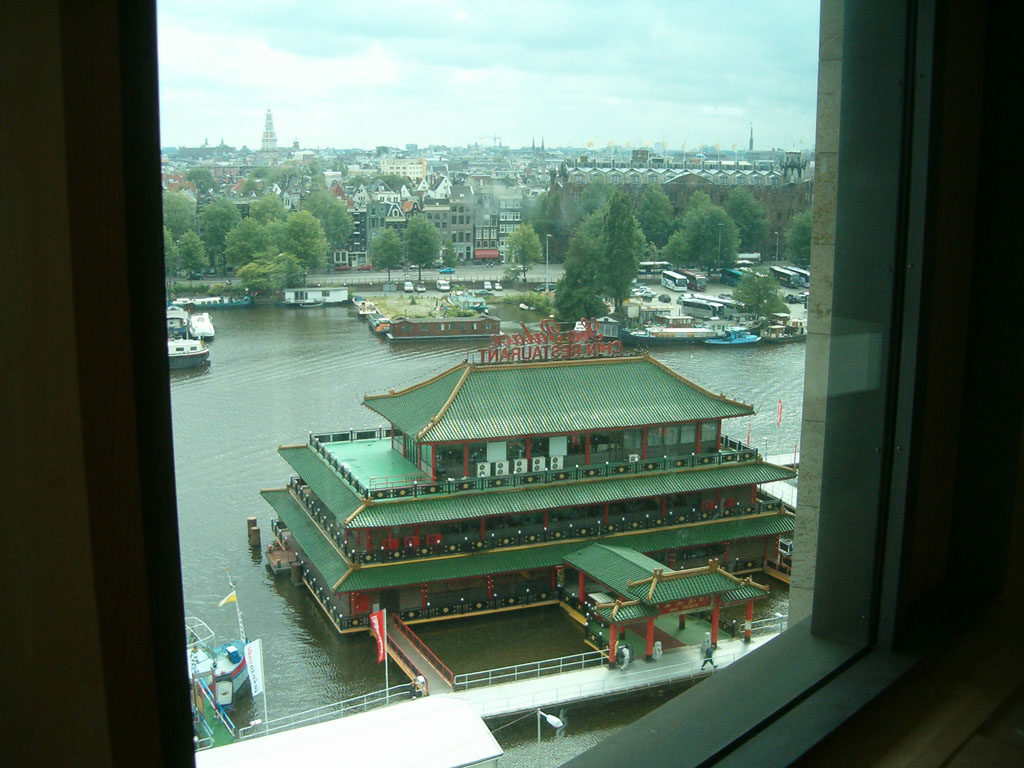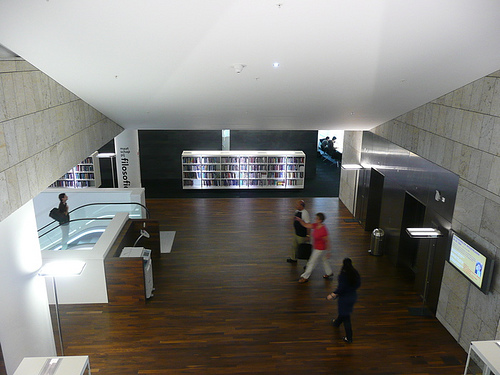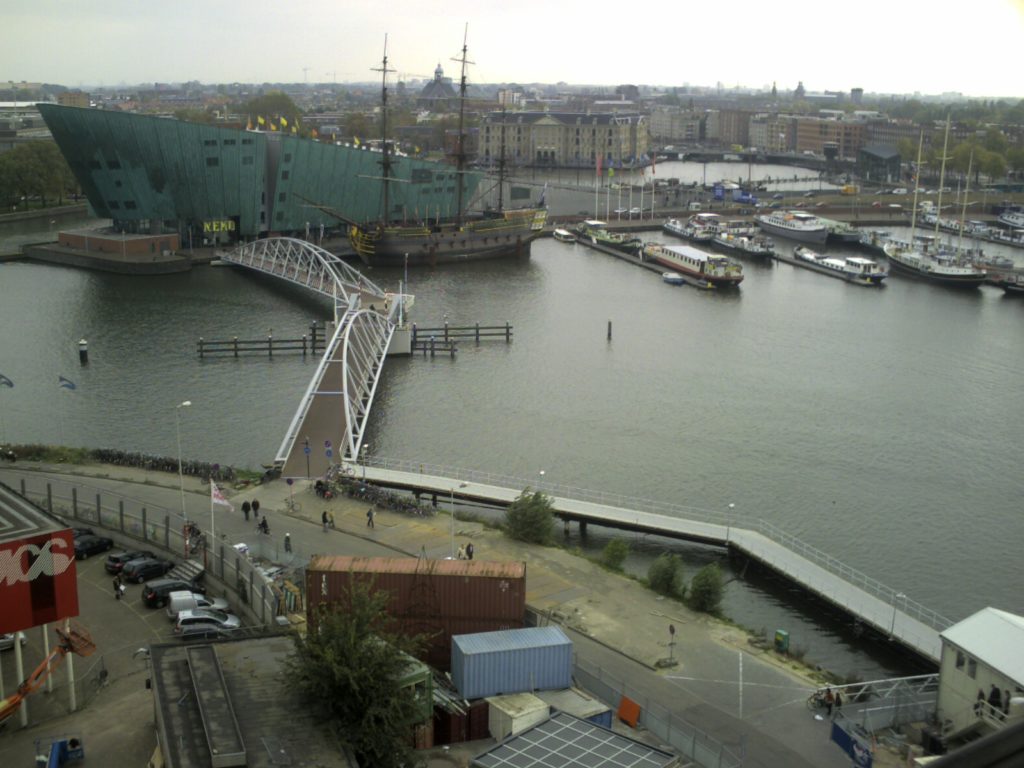Central Public Library of Amsterdam

Introduction
The Amsterdam Central Public Library, designed by German architect Jo Coenen, is the head of a network of 27 libraries called Openbare Bibliotheek Amsterdam (OBA, Amsterdam Public Library).
With approximately 28,500 meters square, is the largest library in Europe. Its construction cost was 80 million Euros and get an average of 7,000 visits per day. It is open 7 days a week from 10:00 to 22:00 hours, not only the library but also a café, a restaurant, theater, terrace and exhibition hall. The system of borrowing and returning books, CD’s, DVD’s and games are fully automated.
Location
Oosterdokseiland is located in a developing area of the city being built on both sides of Central Station, where there are also other important works such as Renzo Piano‘s Nemo and ARCAM (Architecture Center Amsterdam).
The Library is one of three buildings forming part of the master development plan for this area.
From its large windows you can see a panoramic view of Old Amsterdam and the area Westerdokseiland Oosterdokseiland and, on the opposite side of Central Station.
Concept
It was conceived as a cultural meeting center. It will have numerous activities to promote education, reading and understanding among all sectors of the population of the city.
One of the greatest challenges for the architect, was increasing the time people spend in the library. They had calculated that visitors were an average of 20 minutes, about what it takes to get a book. The authorities wanted that the building was not just a book store but to become a learning center, source, site of expression and entertainment. Therefore, the library has not only places for reading, but also with other areas of business development.
The focus of the work is light, both natural and artificial. Large windows allow for their optimum utilization and provide spectacular views of the city from a high point.
In the front we used a wooden frame. Walking through the interior reveals its iconographic significance, representing the bookshelves.
The whole work is a collage of galleries, stairs, holes and atriums. The building vertically is related by two large voids that connect the plants and give a full view of the entire volume of building, displaying also a unique feature: the escalators, which act as the main source of artificial lighting.
Spaces
It has a floor area of 28,500 square meters, spread over 10 floors, with 1200 seats and 600 computers with Internet access. It also includes an auditorium, an exhibition hall, the Museum Library, the Museum of Gerard Reve and 2000 parking spaces for bicycles.
Once you enter the building, the white panels that illuminate the stairs with black letters indicate what can be found on each floor: audiovisual, novels, travel books, science, etc..
The basement is devoted to children. It contains, in addition to the shelves, small buildings in the form of towers to be entertained while playing their favorite books look. On the ground floor, which is accessed, is the section of magazines and newspapers and, alongside these, a café where you can drink while reading. You can also bring books to the restaurant on the eighth floor, which has a terrace facing south with a great view.
Each plant has a particular sector that makes up a different space. In the back of the fifth floor is an area with 15 chairs rotary-skinned as a relaxation area and where the hangars are from Central Station. Besides the typical study tables, chairs and armchairs are in different spaces, strategically placed next to windows that invite conversation and debate, from which one can see the city.
There are different areas in addition to reading. One is the Theater of the Word, with capacity for 270 people, where there are concerts, plays and documentary screenings. Other activities of the most curious, is “Philosophical Café”, an open-door meeting for those interested in Socratic philosophy, and a “free speech podium” that allows any citizen to tell their own story.
Lighting
The glass surface is very important in this building, always presenting huge windows allowing optimum use of natural light and spectacular views of Amsterdam-Centrum.
The most singular of the project is the artificial lighting. First, the escalator that runs vertically the central volume of the library functions as a huge fixture and therefore, as the main filler of artificial light. Its light bathes, by itself, all floors of the building because the walls are practically nonexistent. On the other hand, was used where necessary, suspension lights, reaffirming the strong personality of the project.
All light sources are hidden and invisible, integrated into the design as part of the furniture. There are no fixtures recessed into false ceilings, so that volumes remain very clean.
Materiales
La fachada principal está revestida de piedra natural y paneles de madera.
Video




